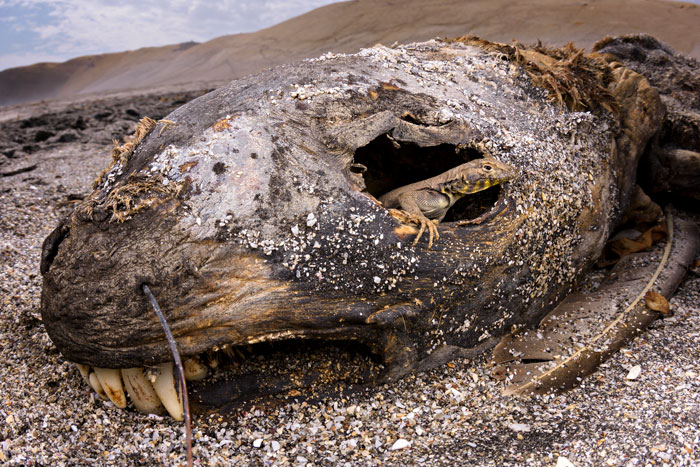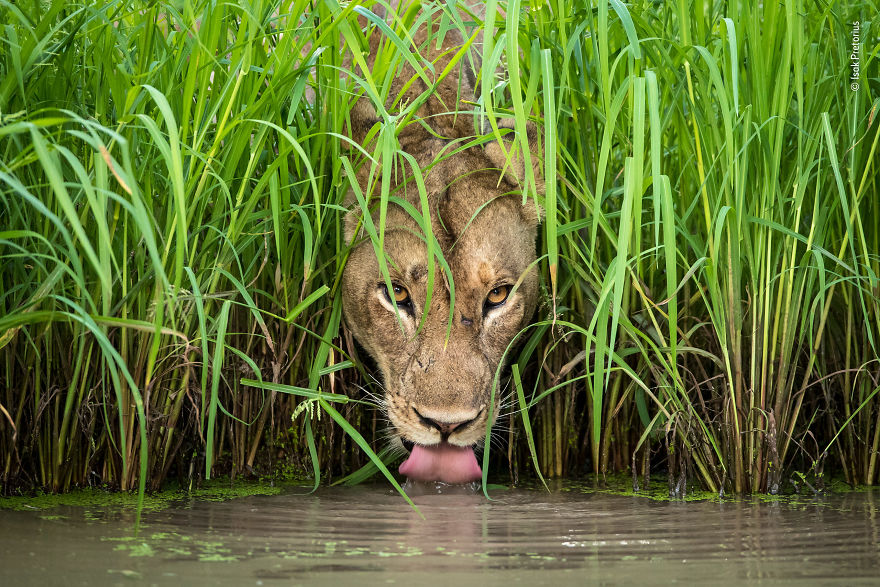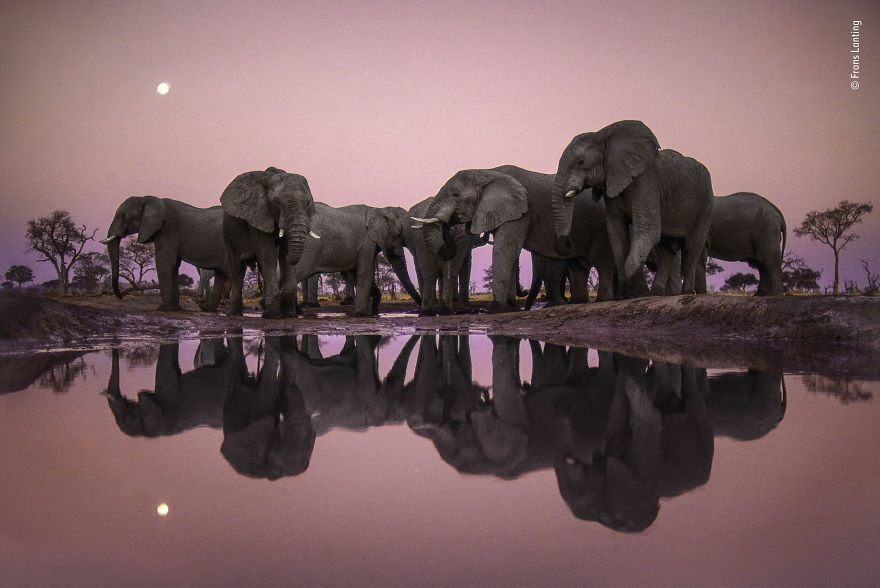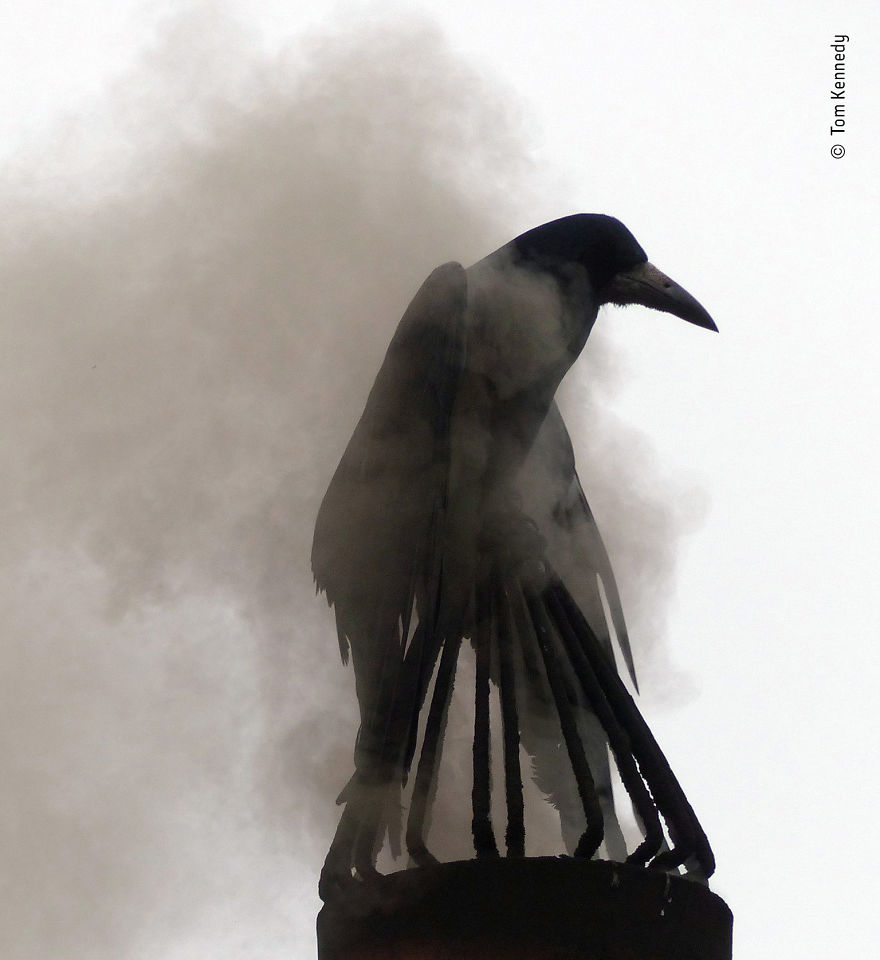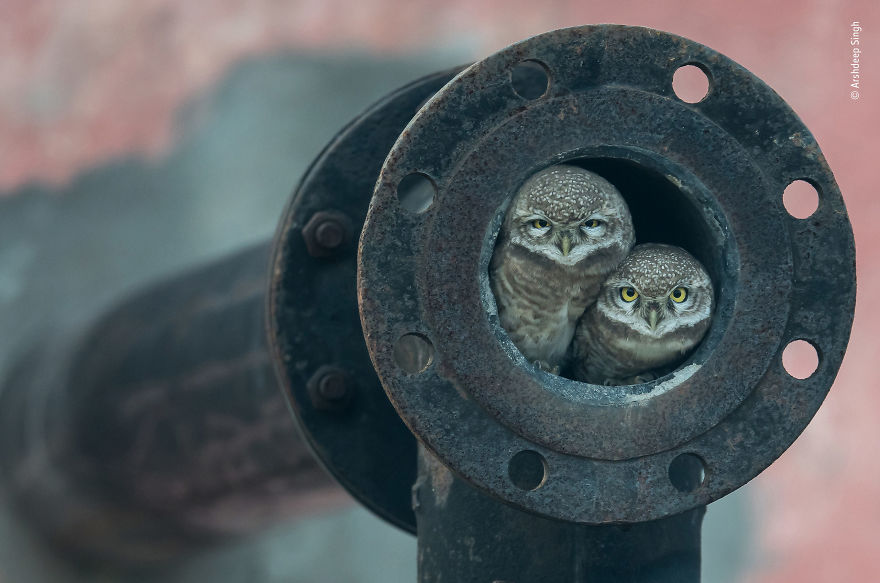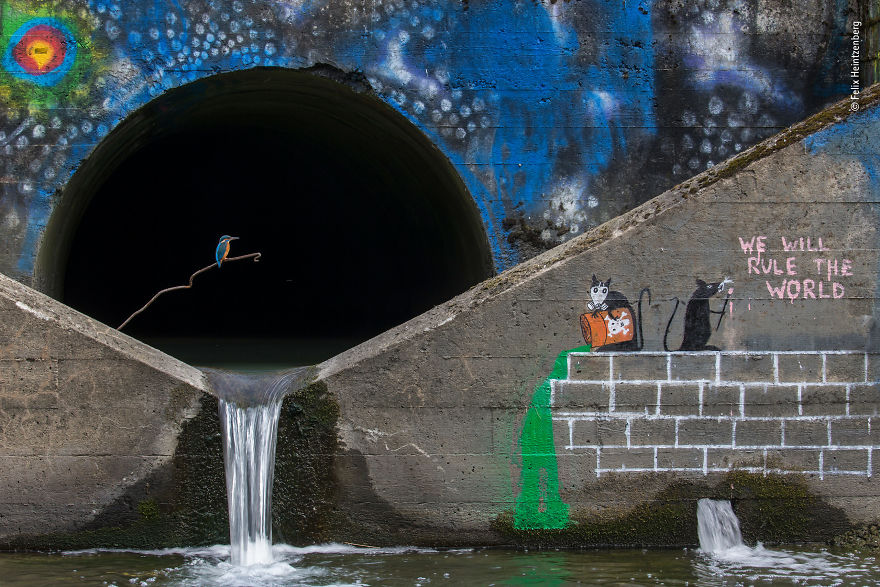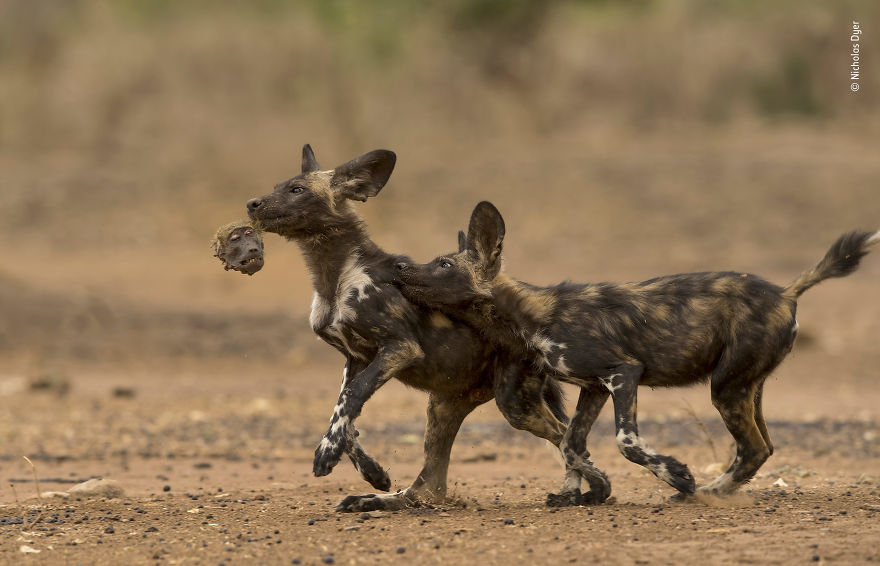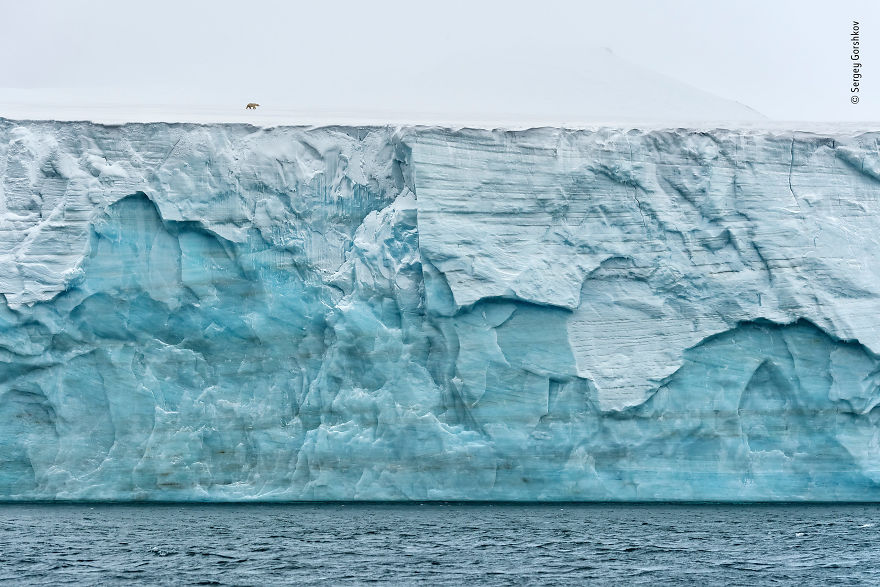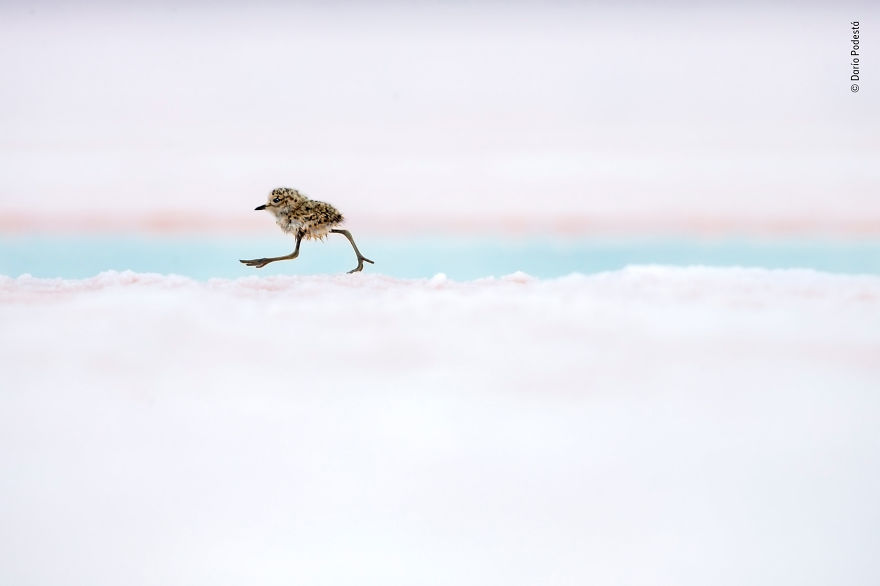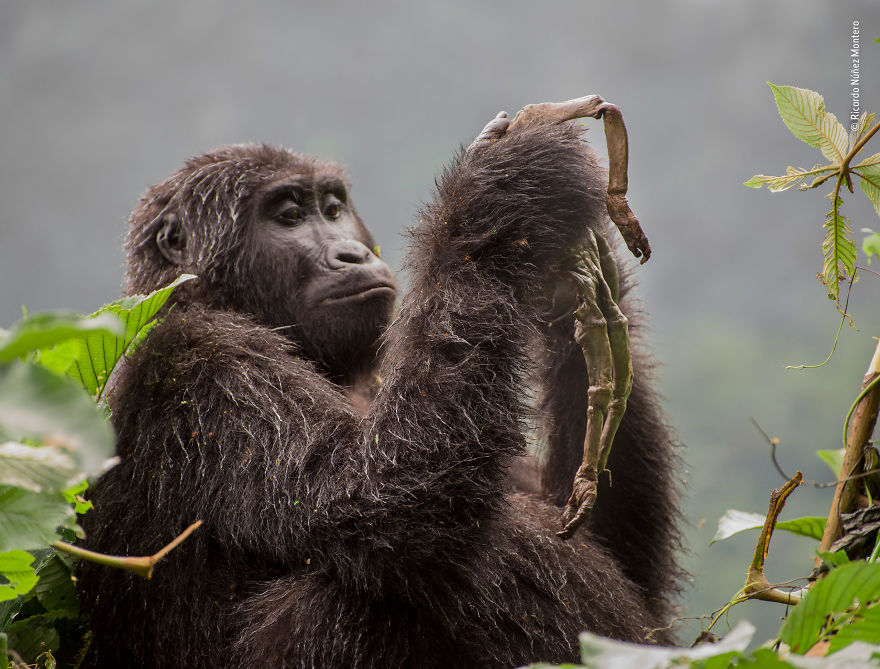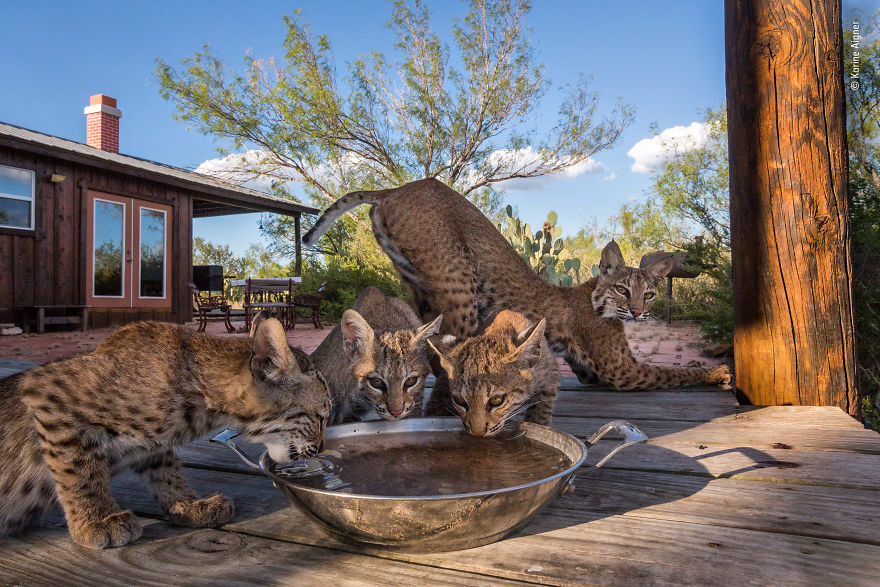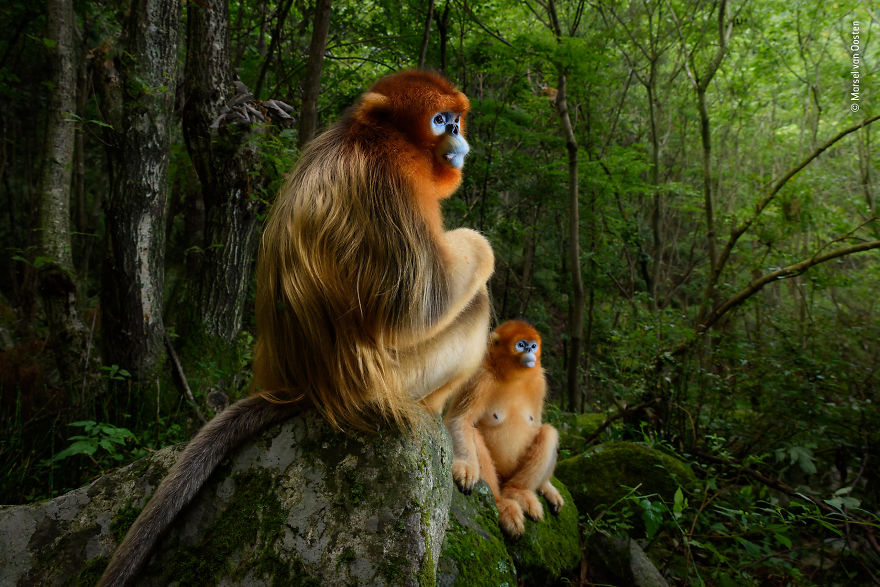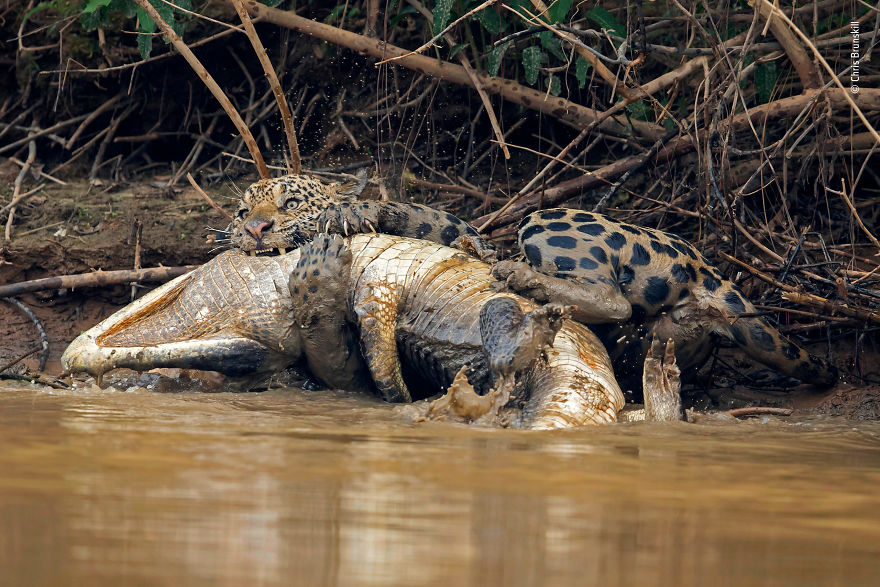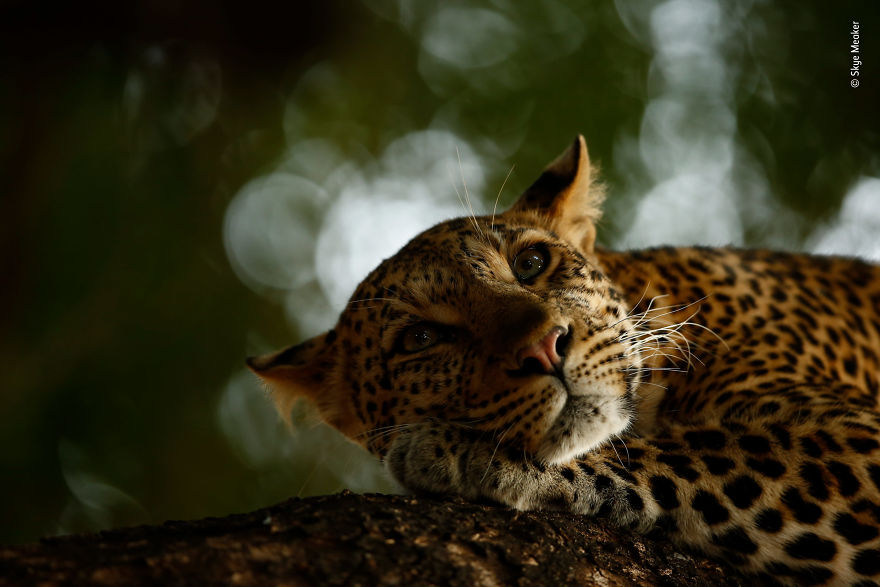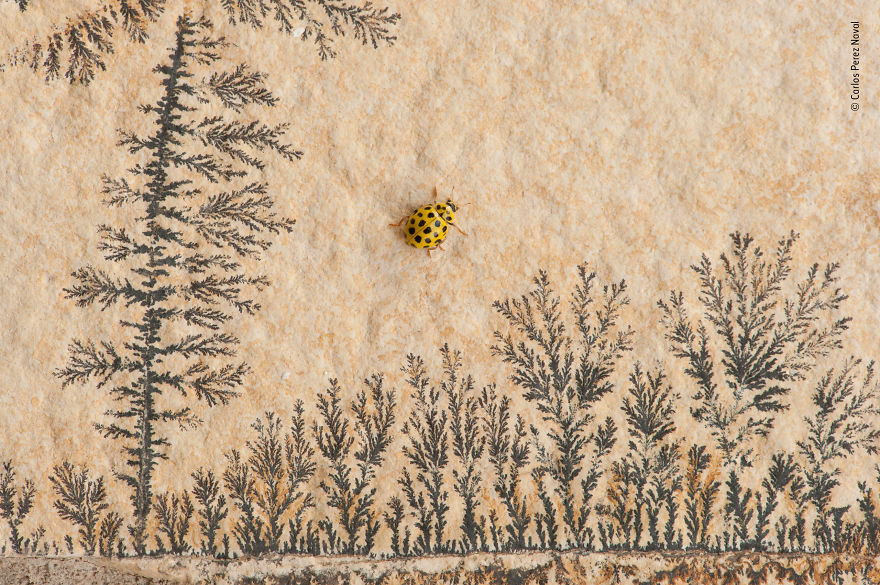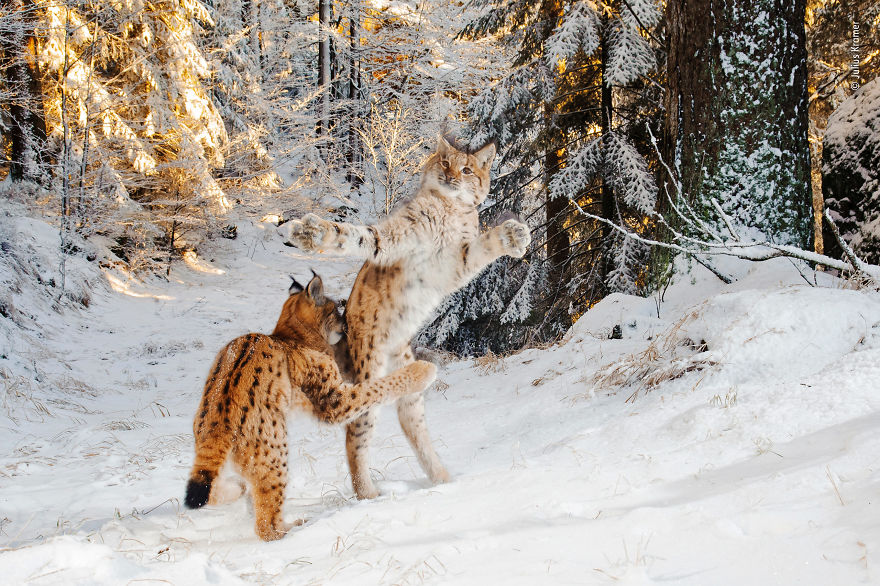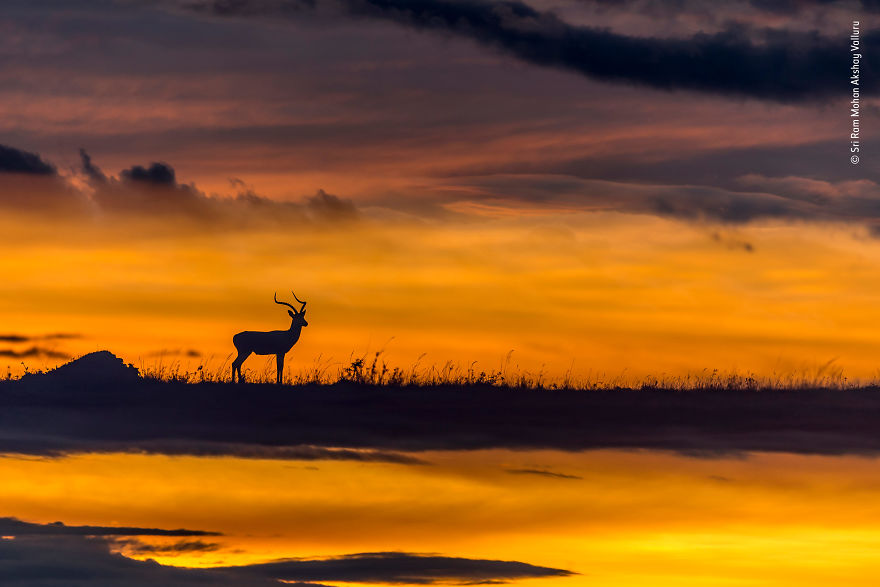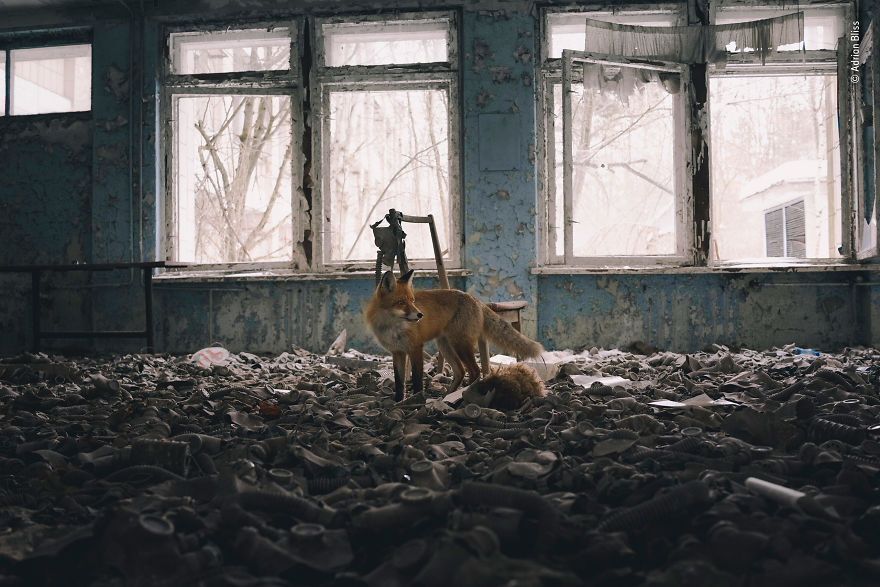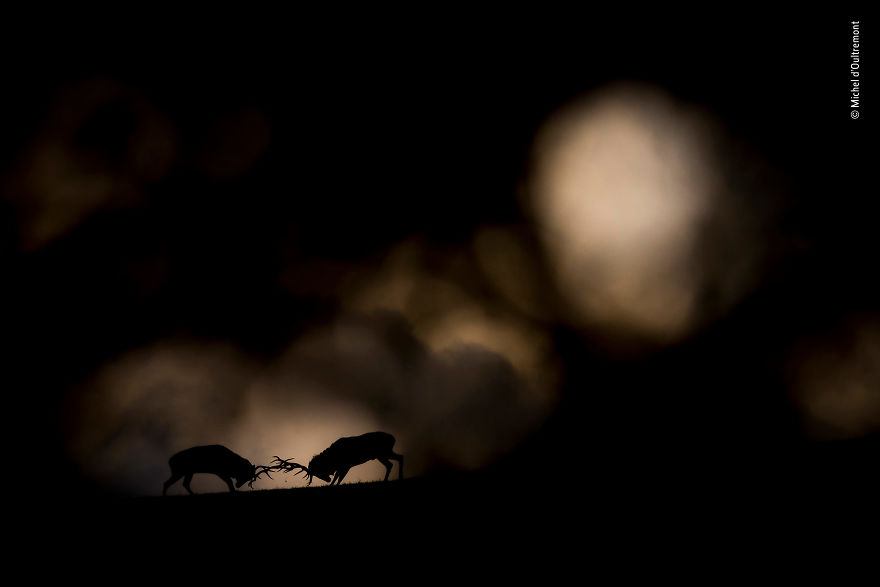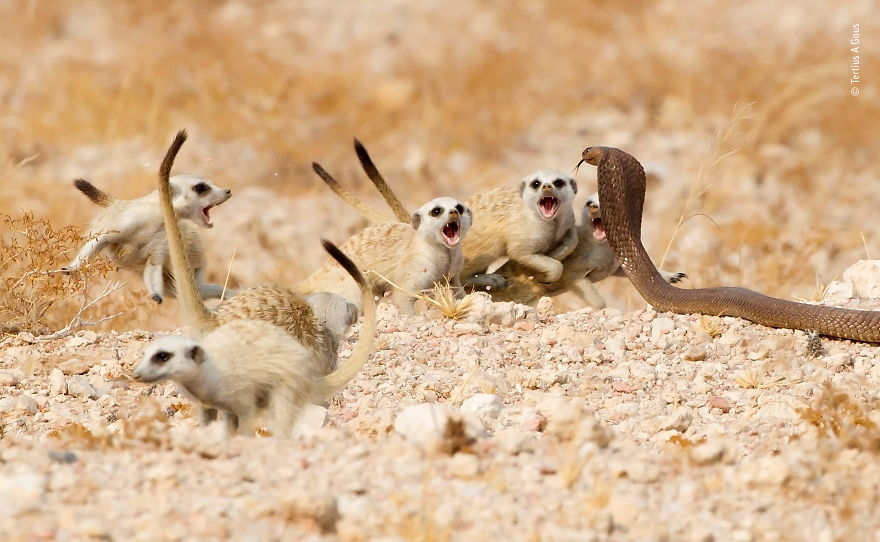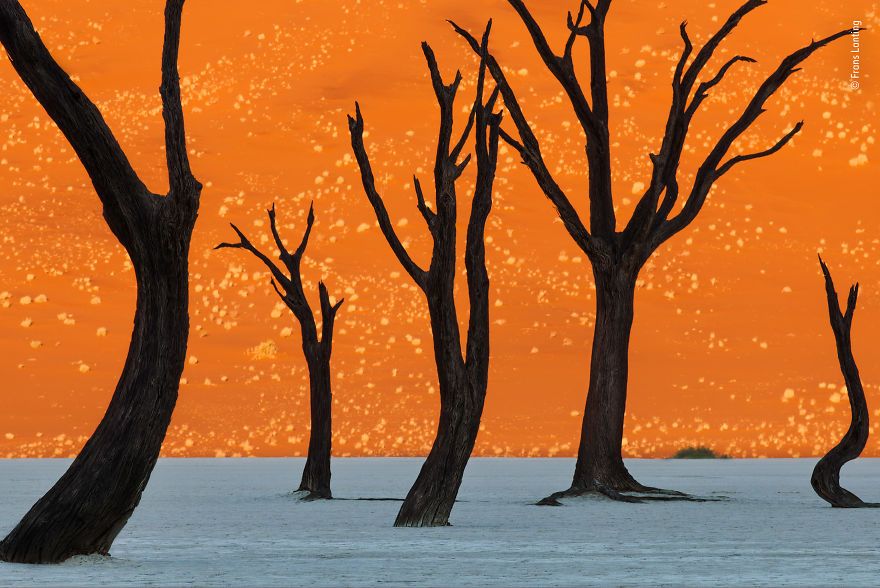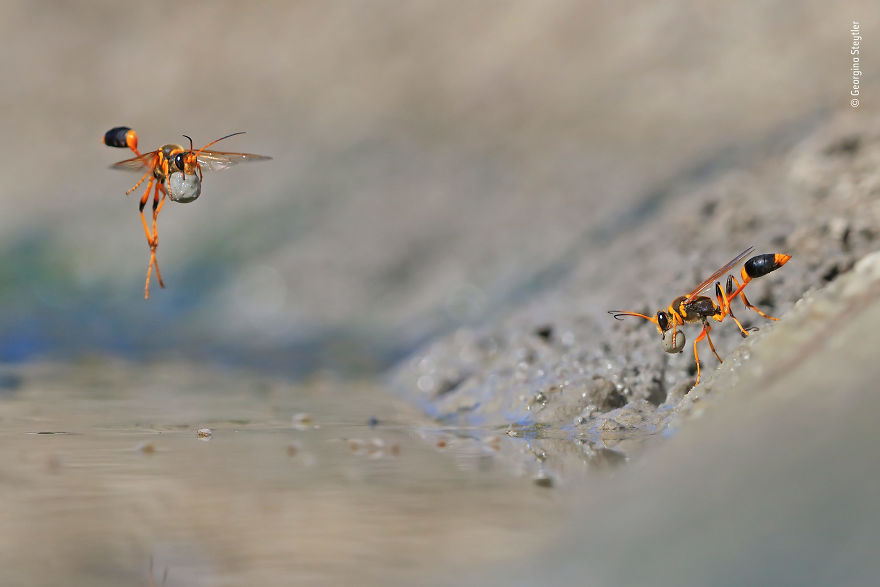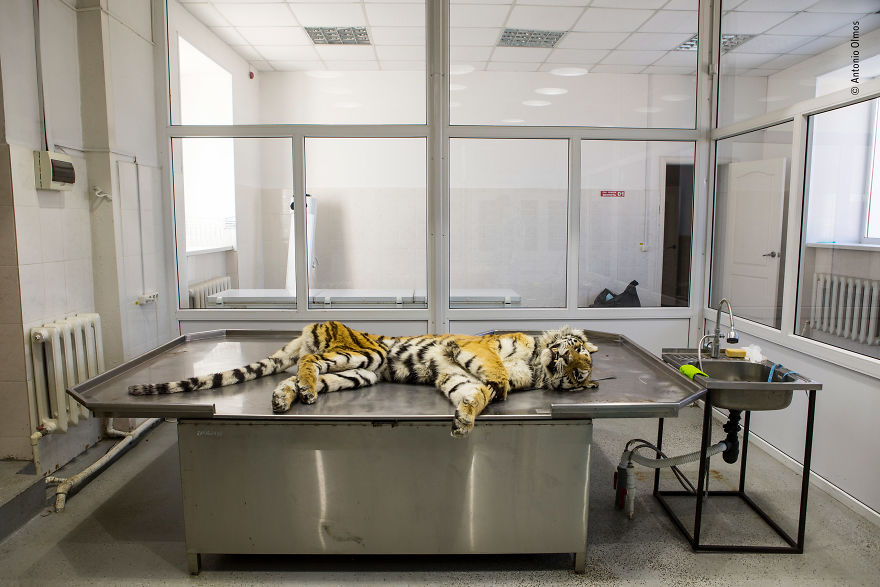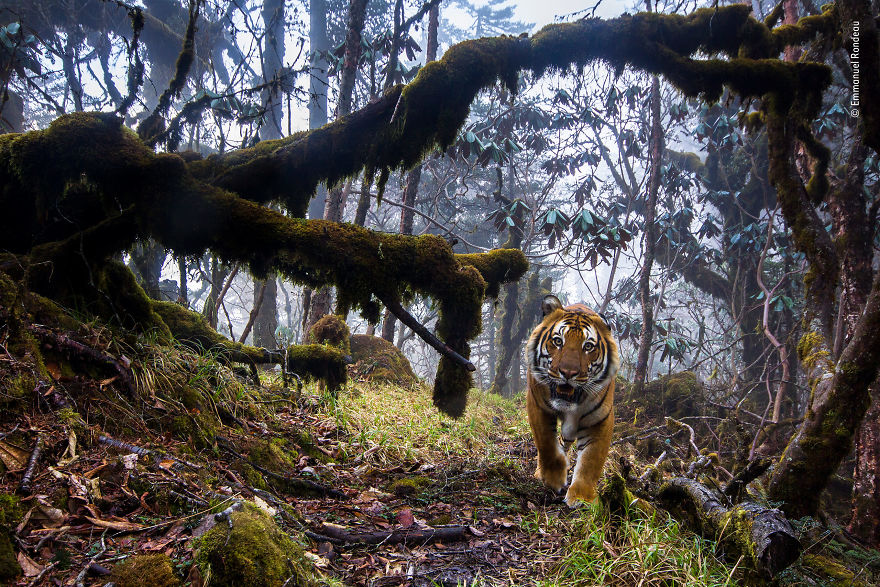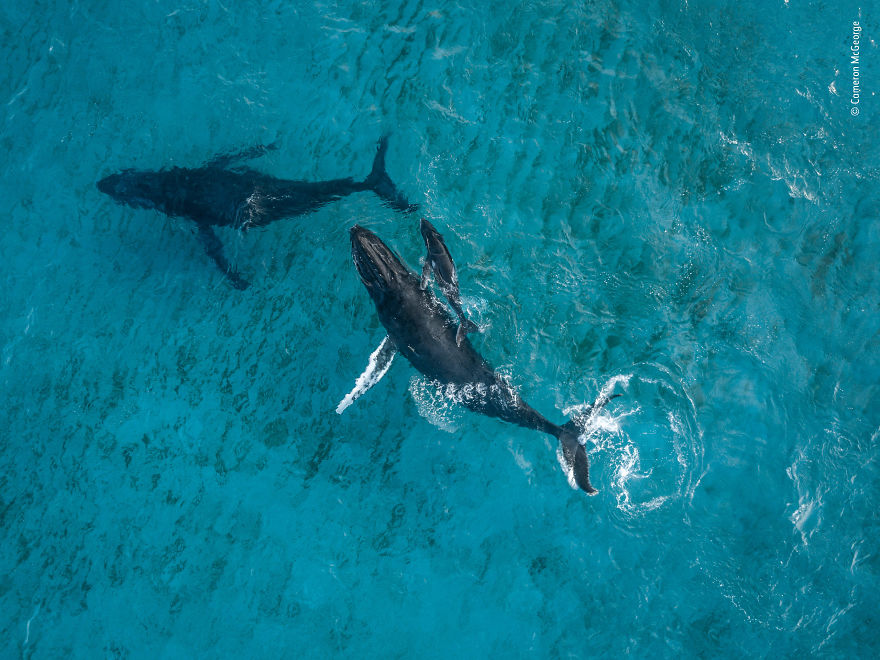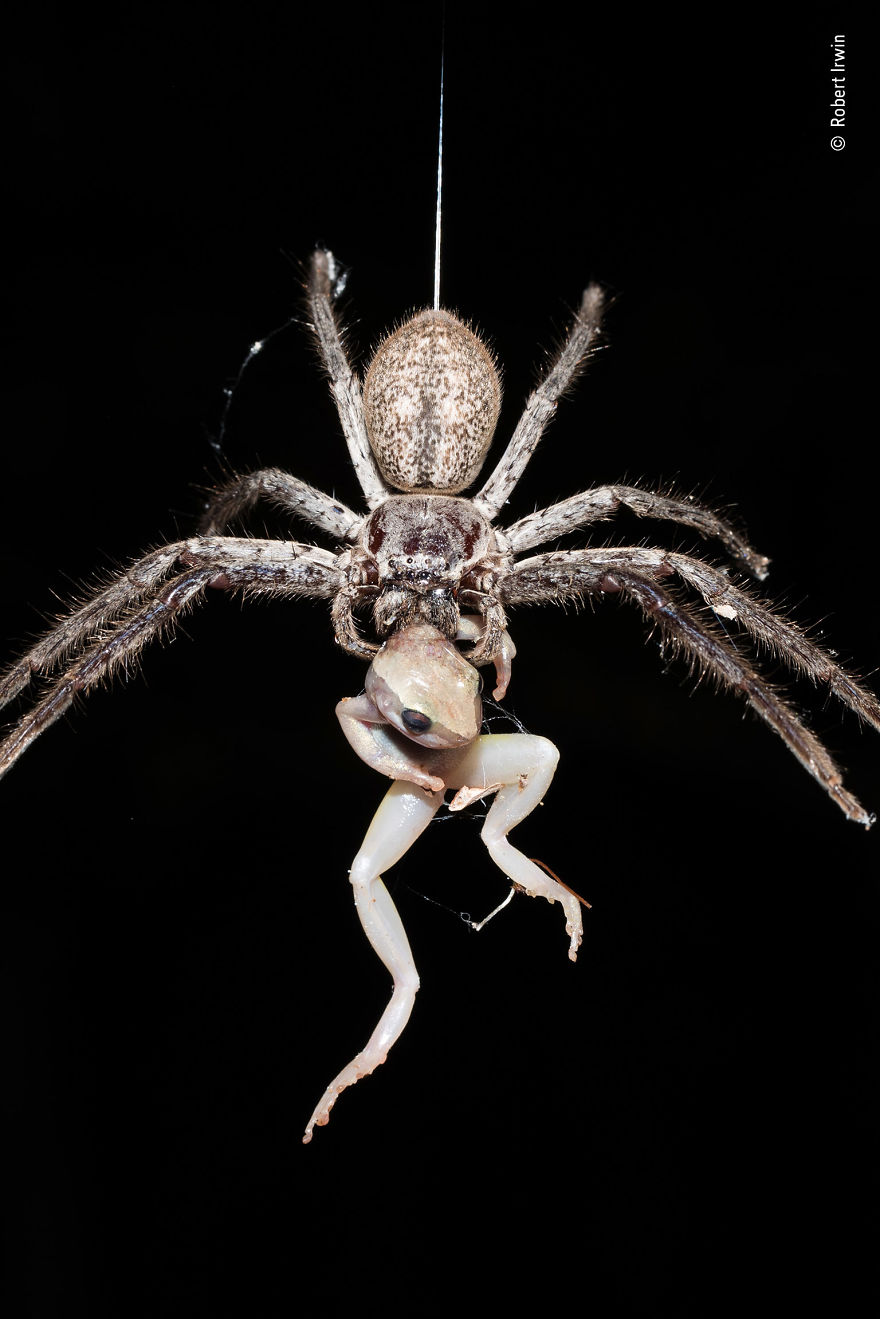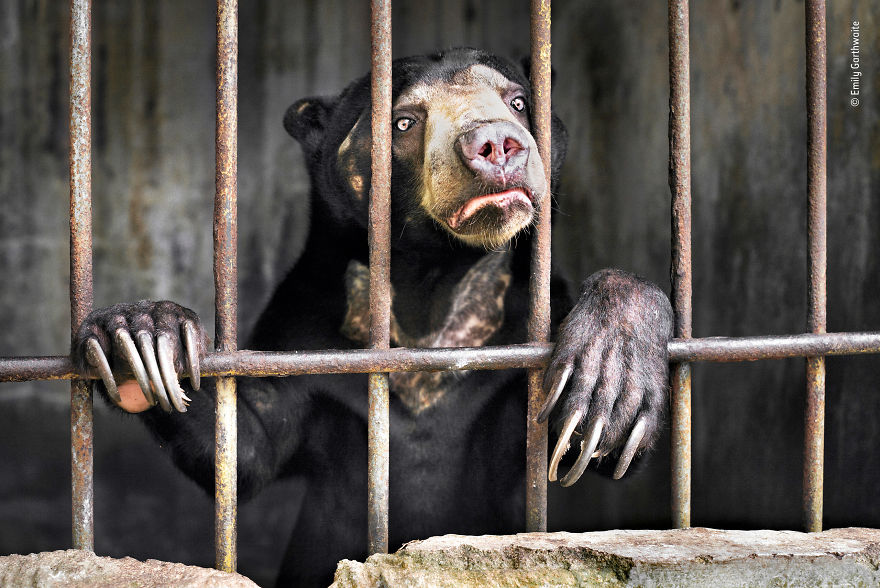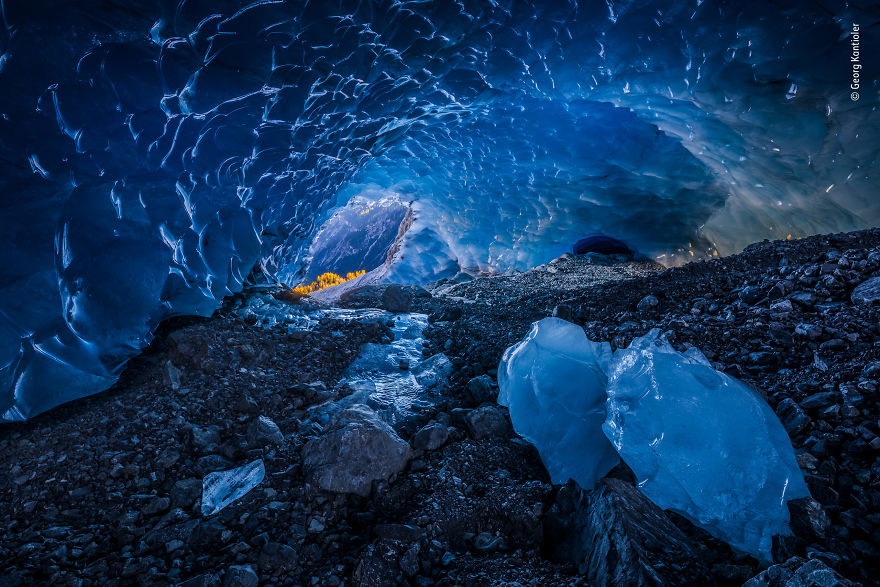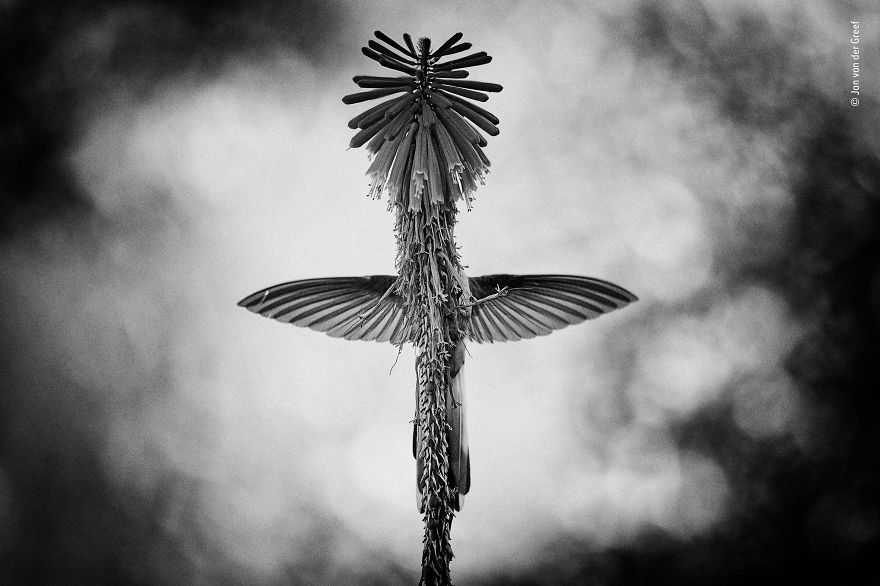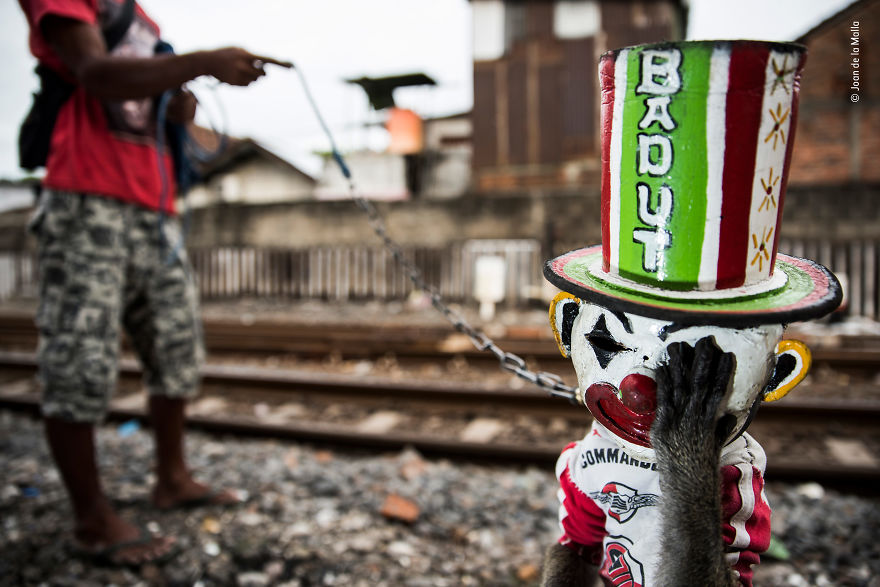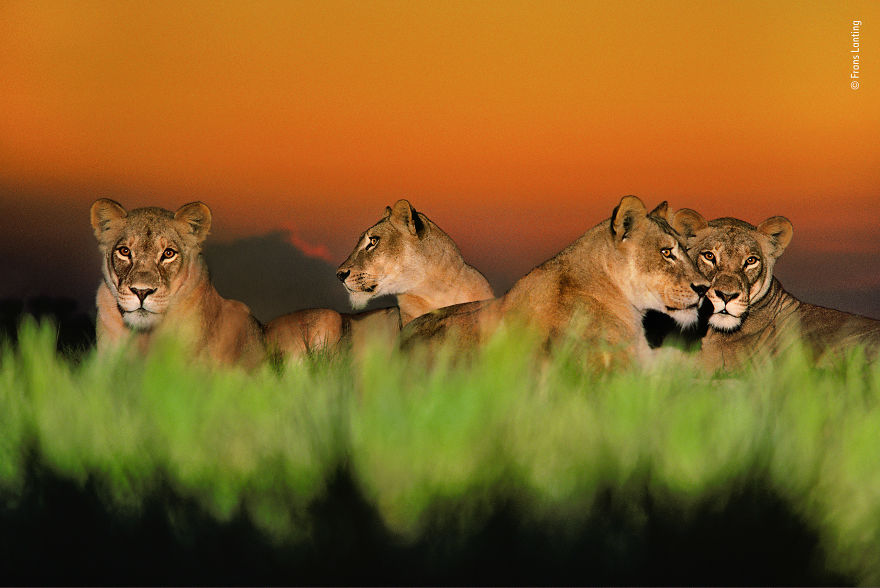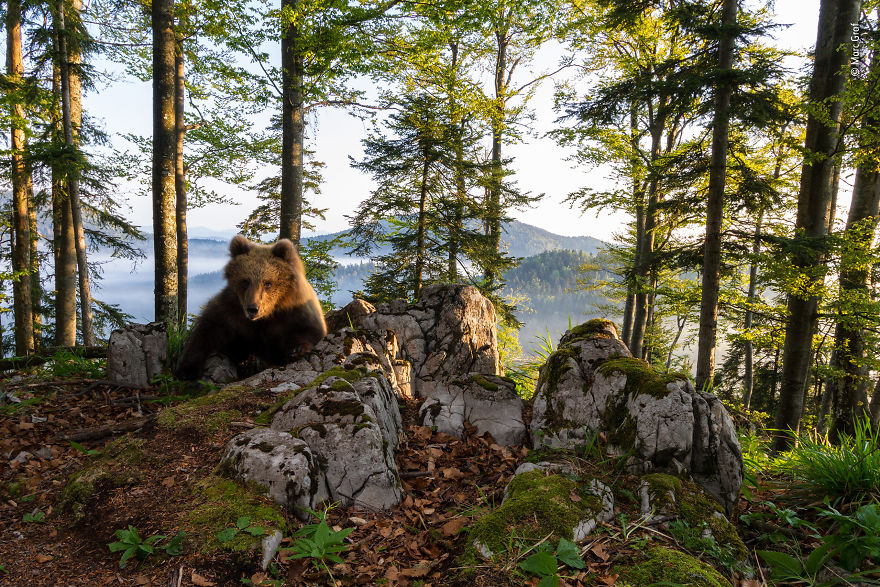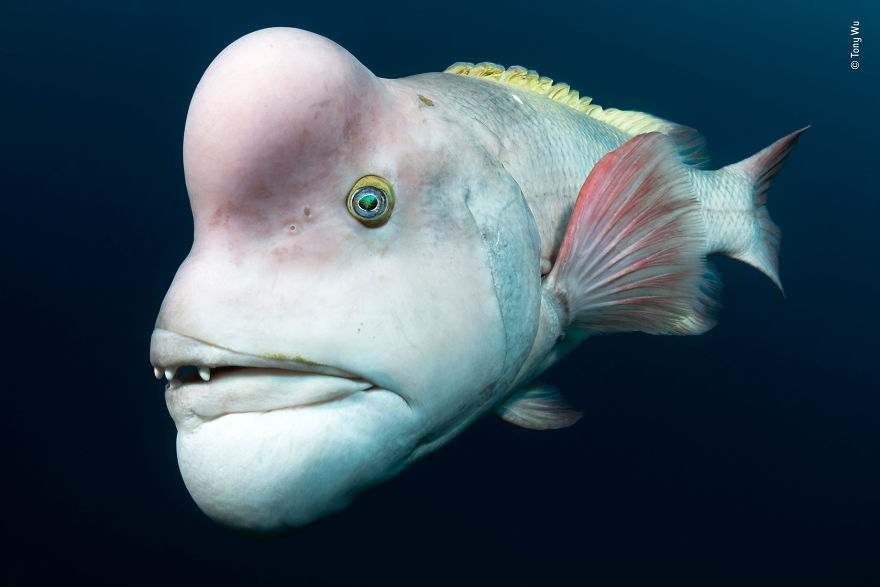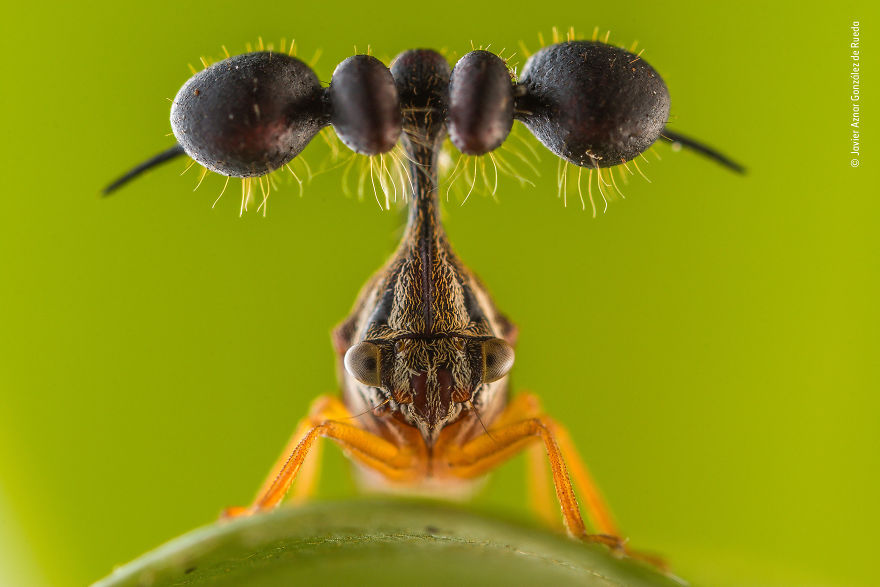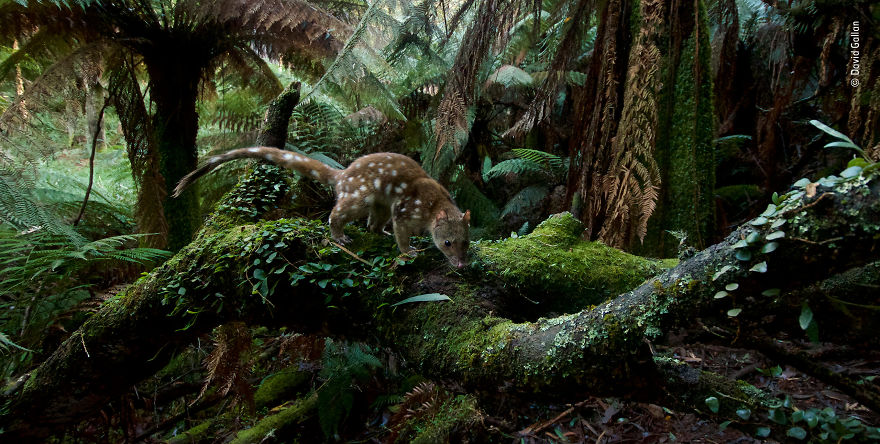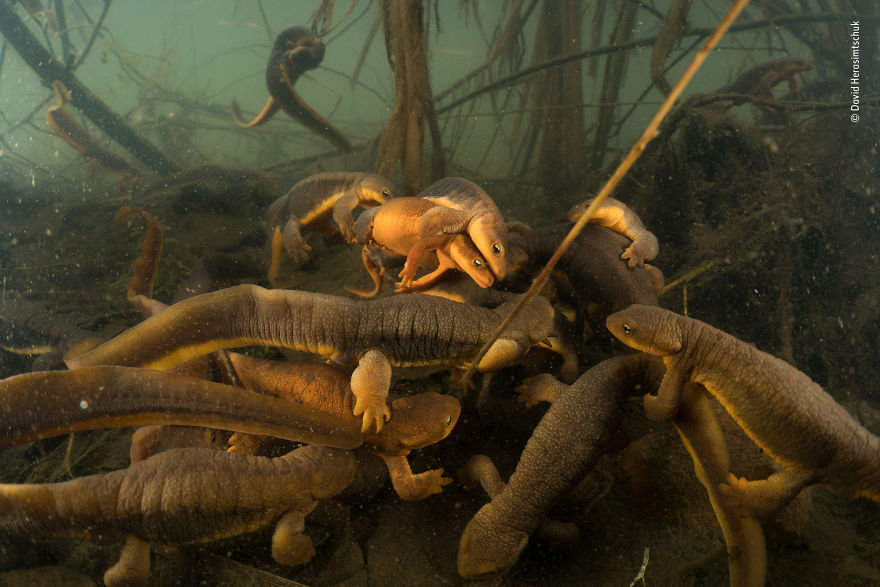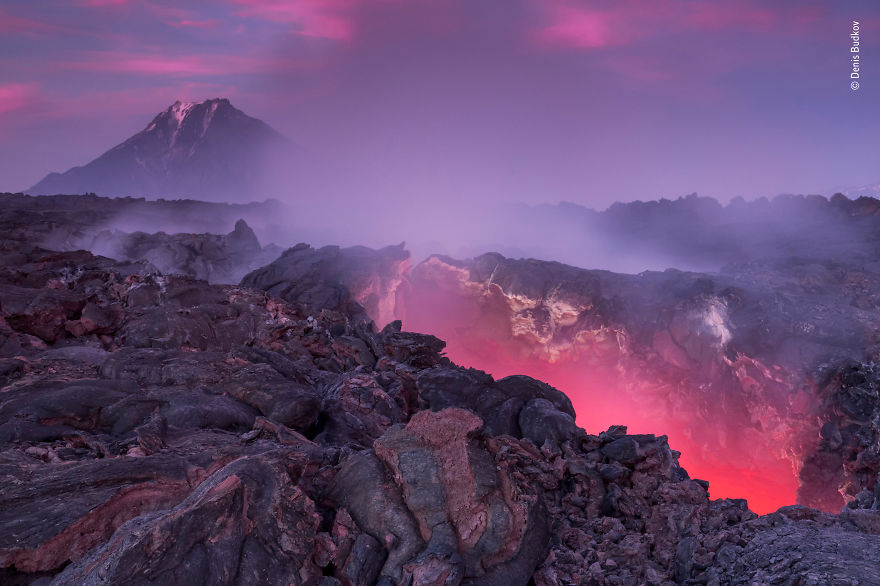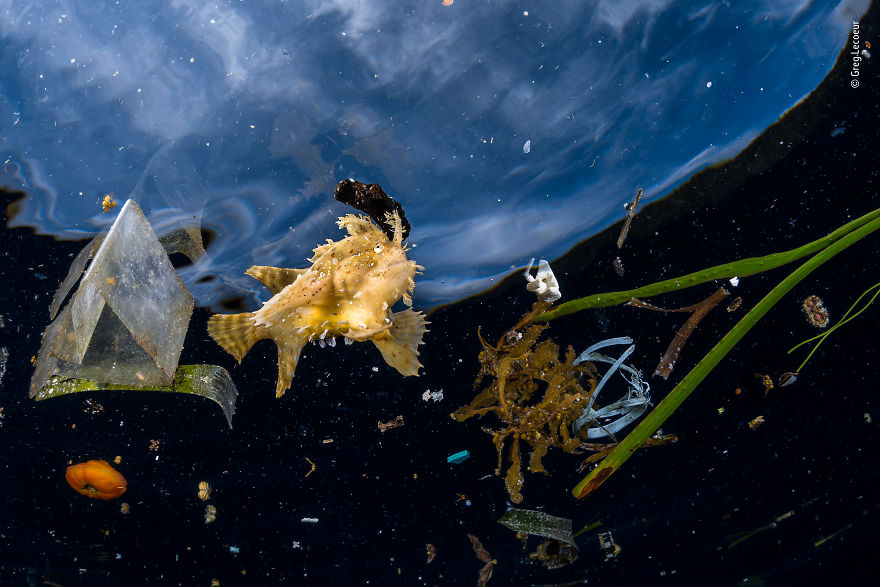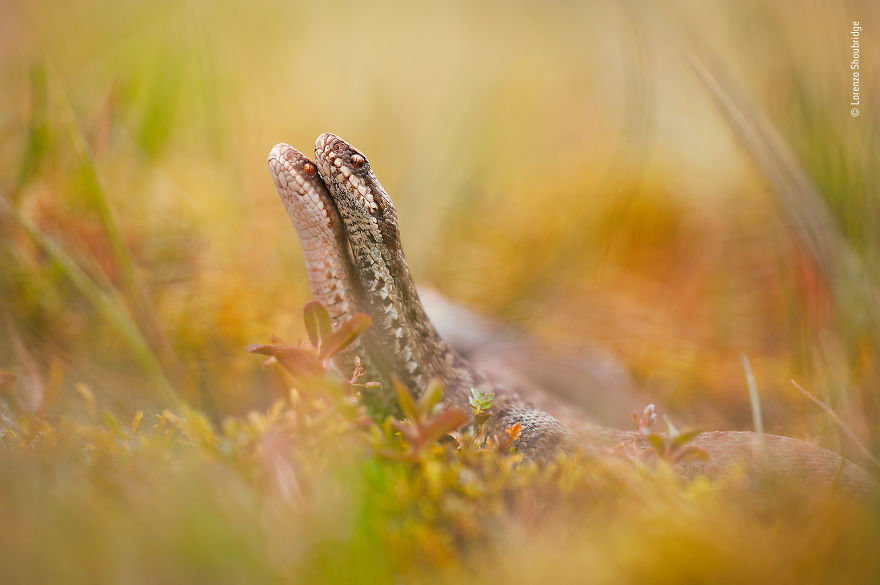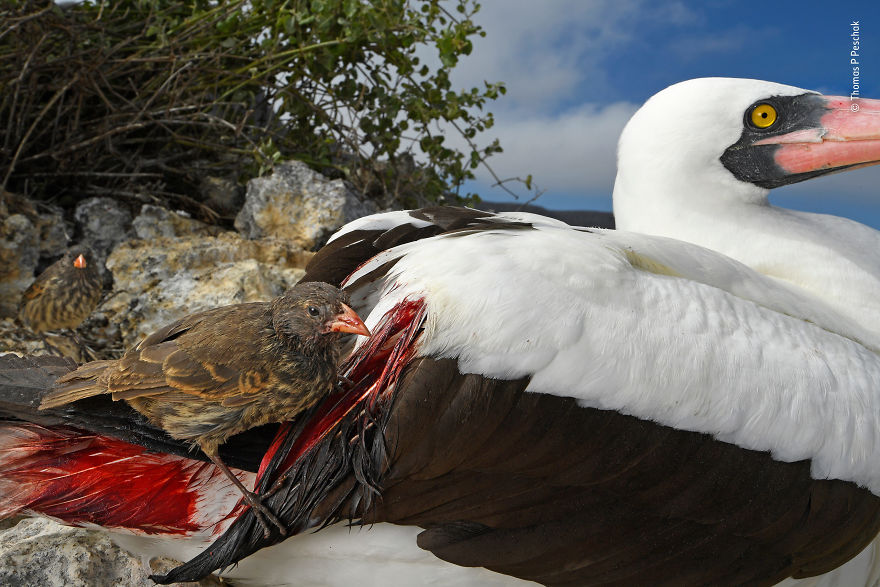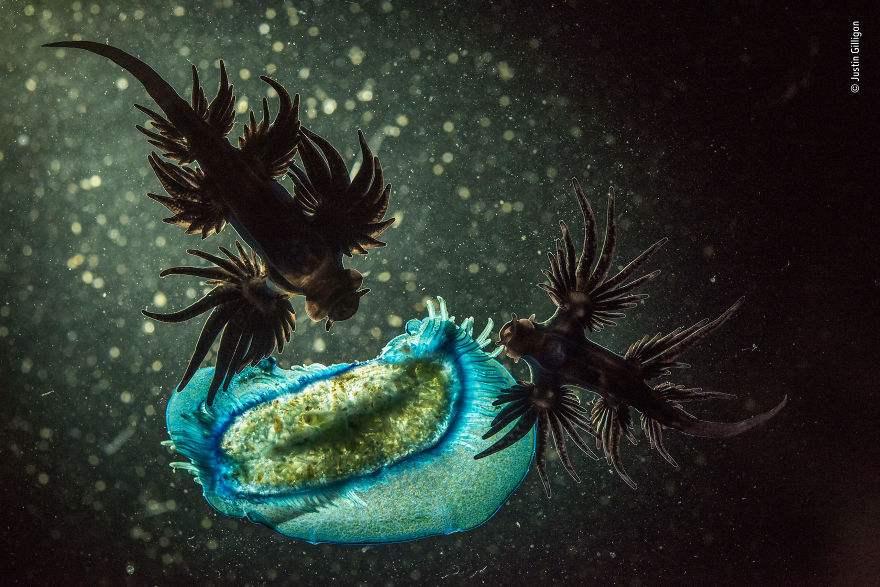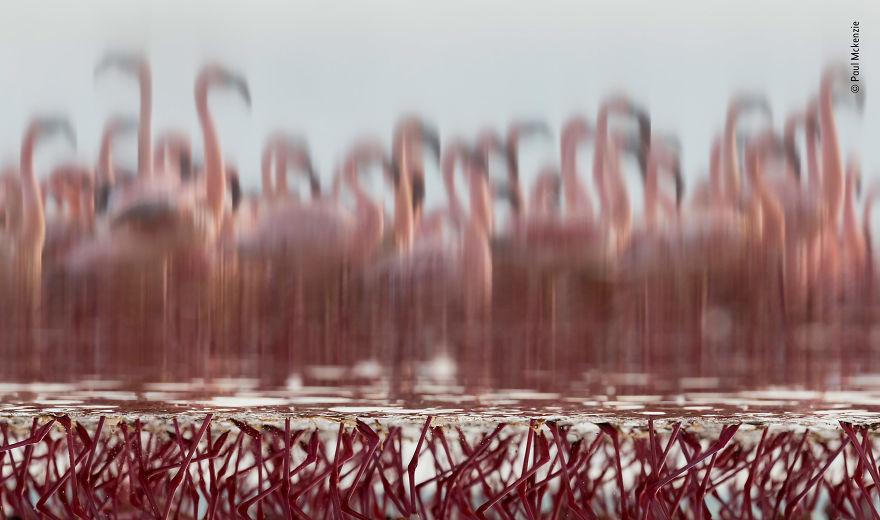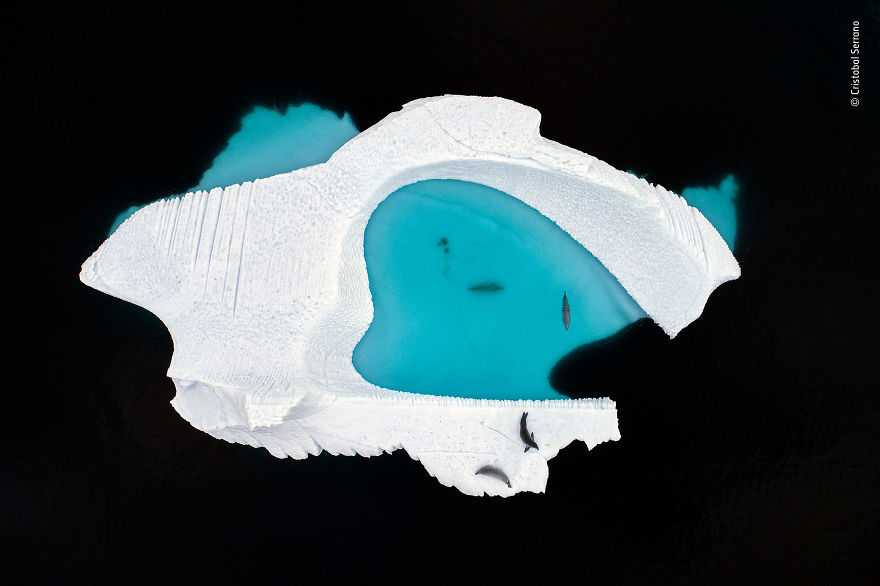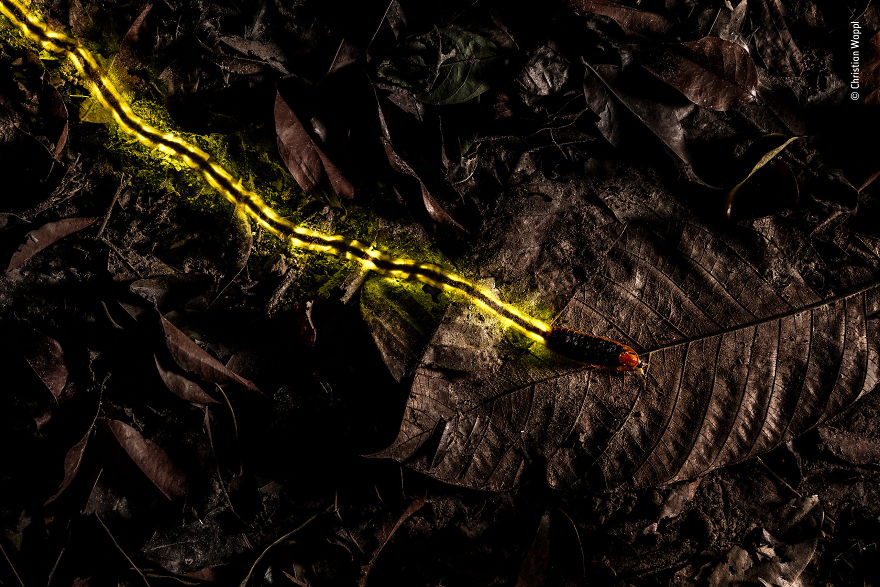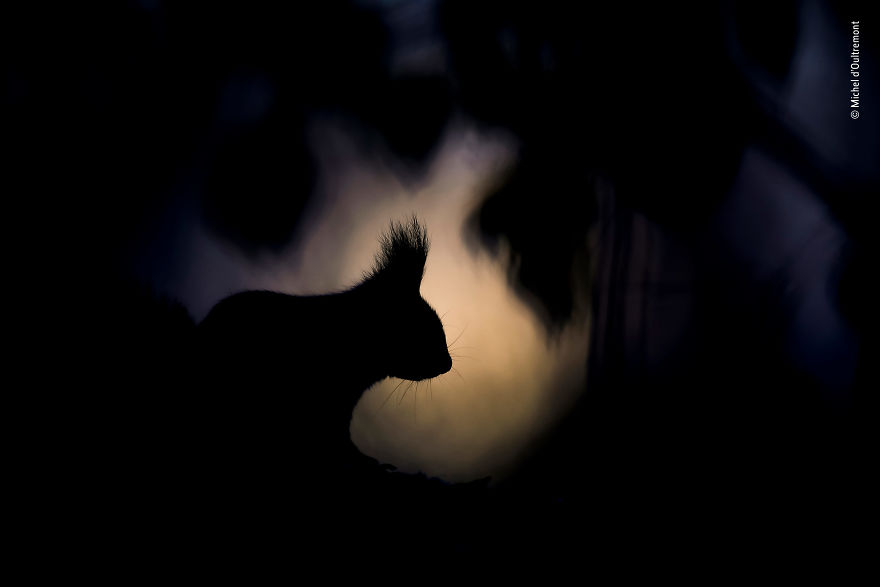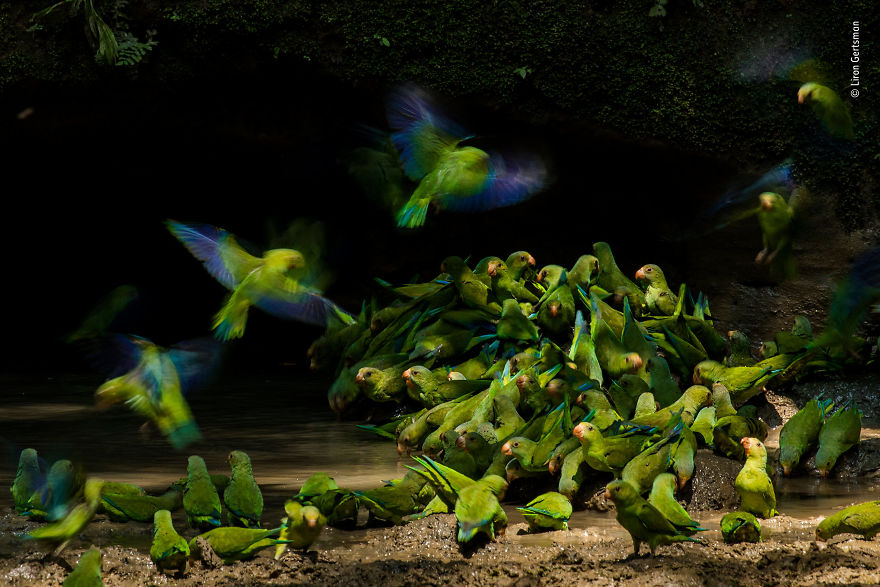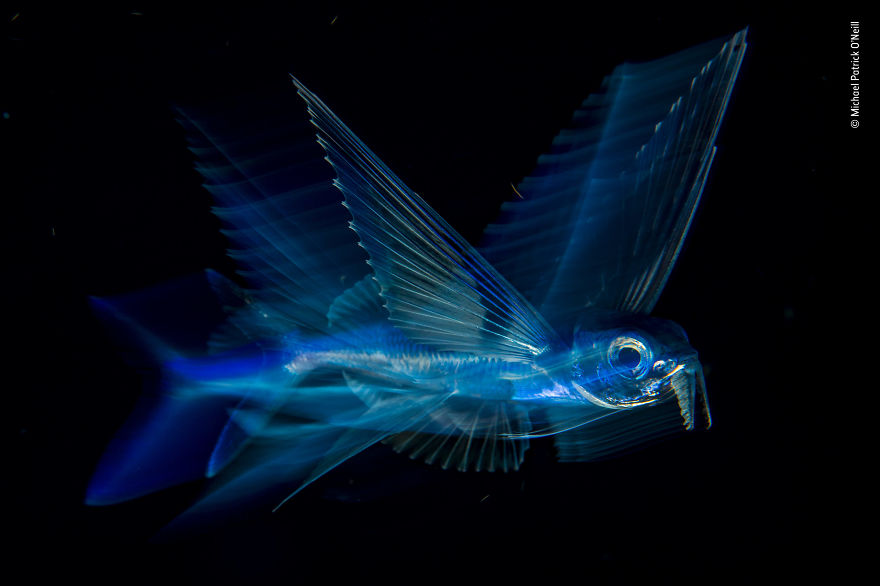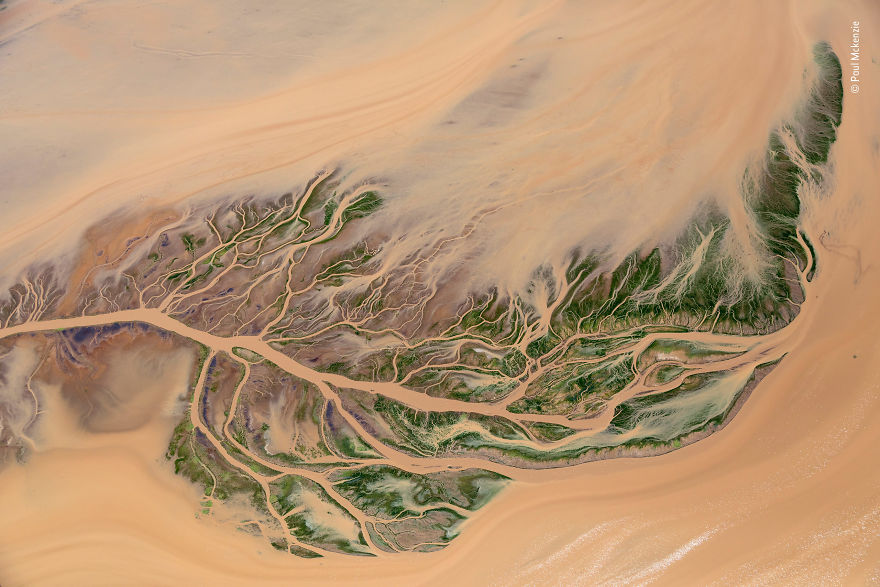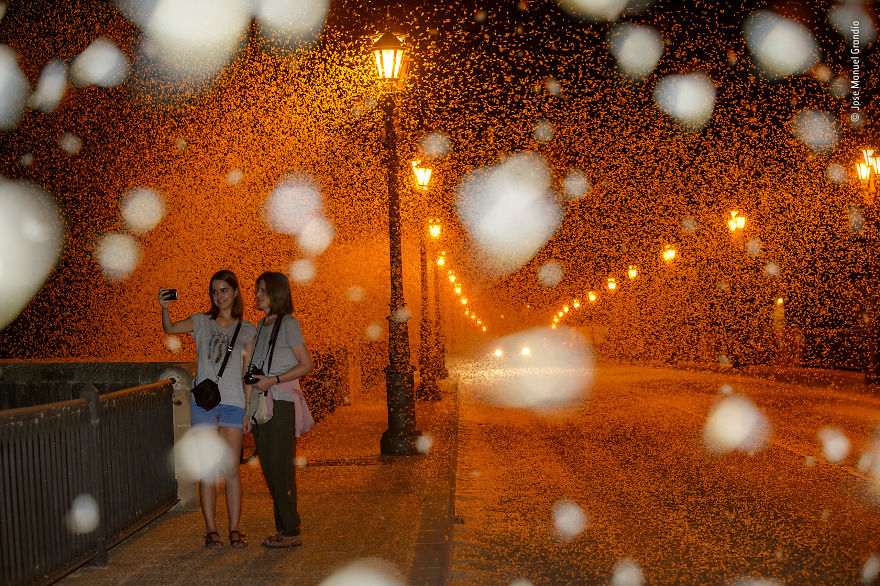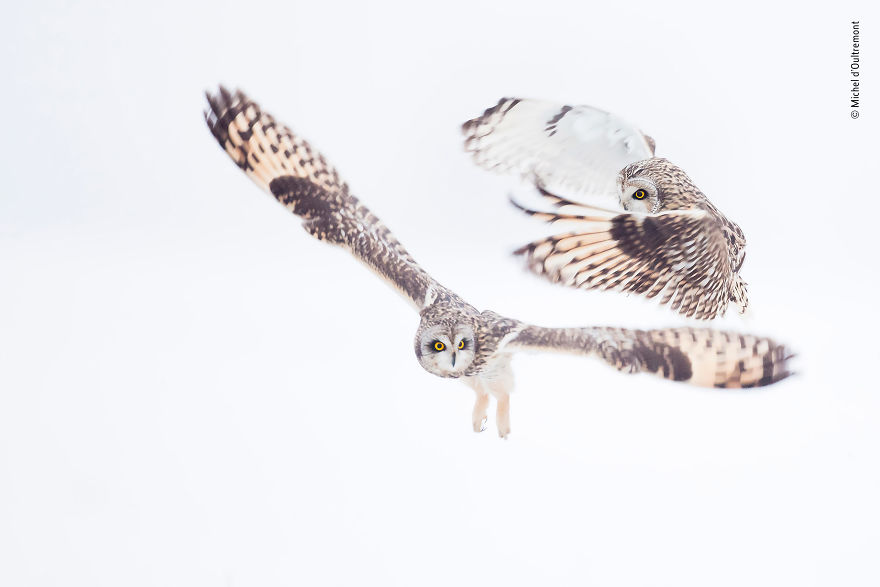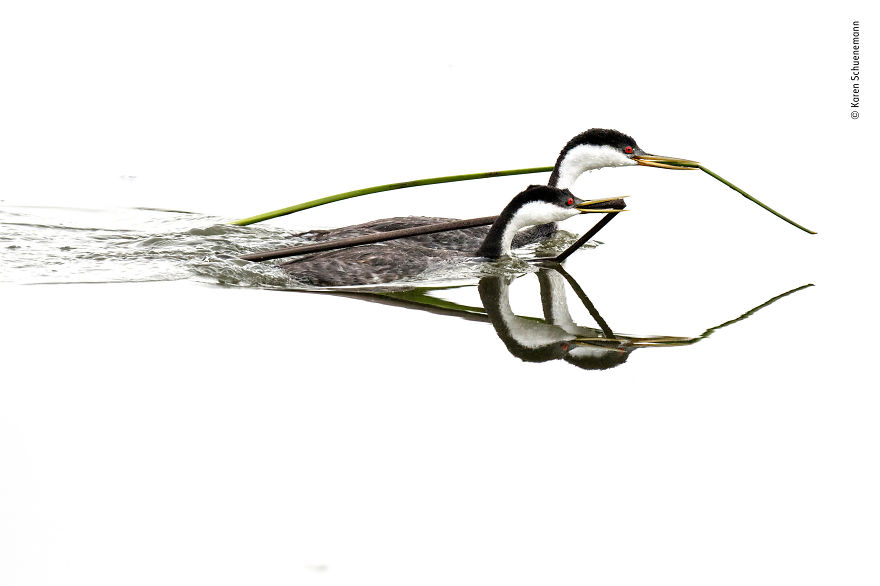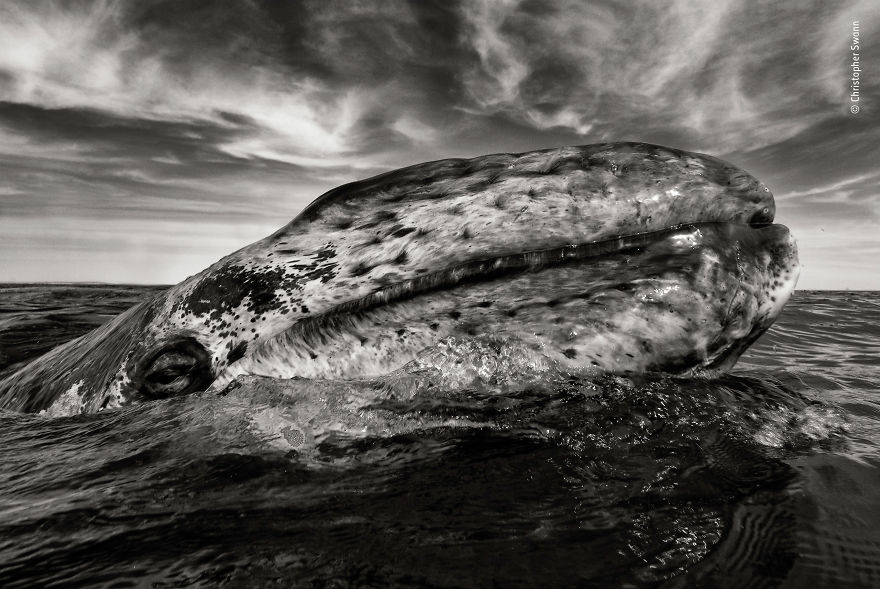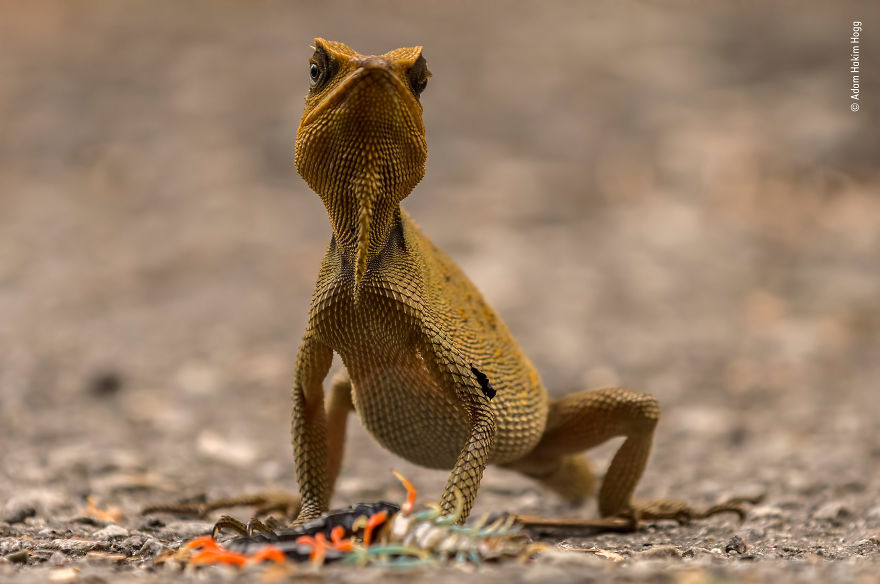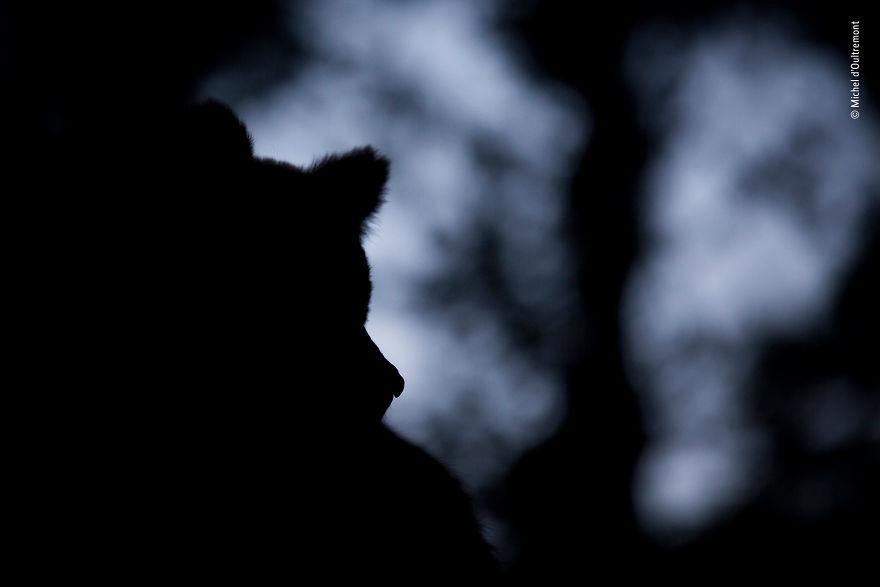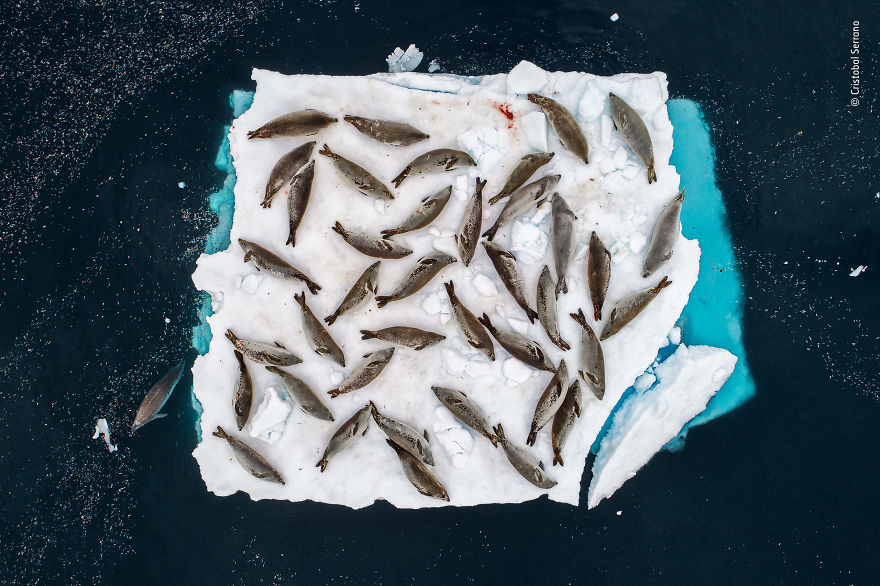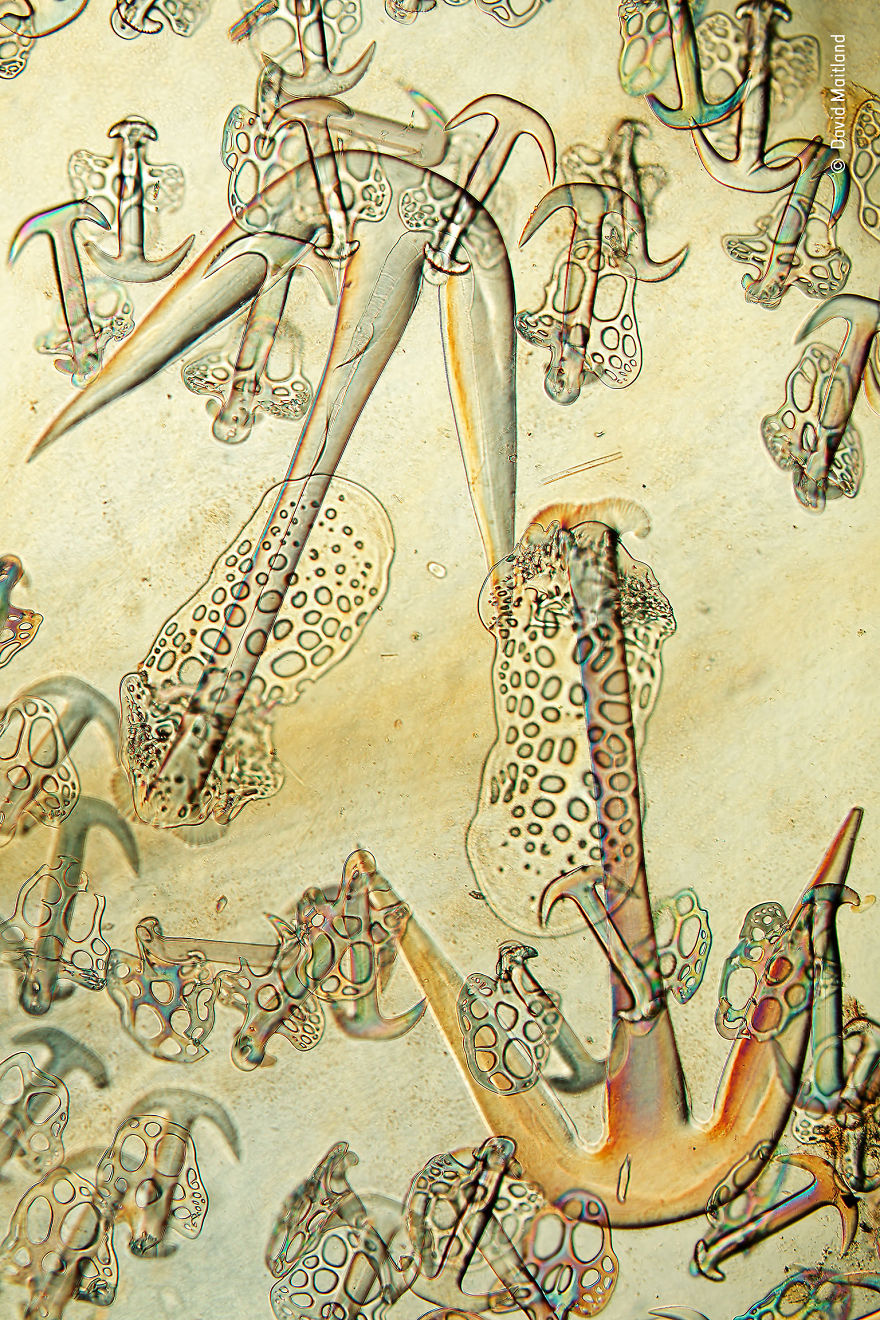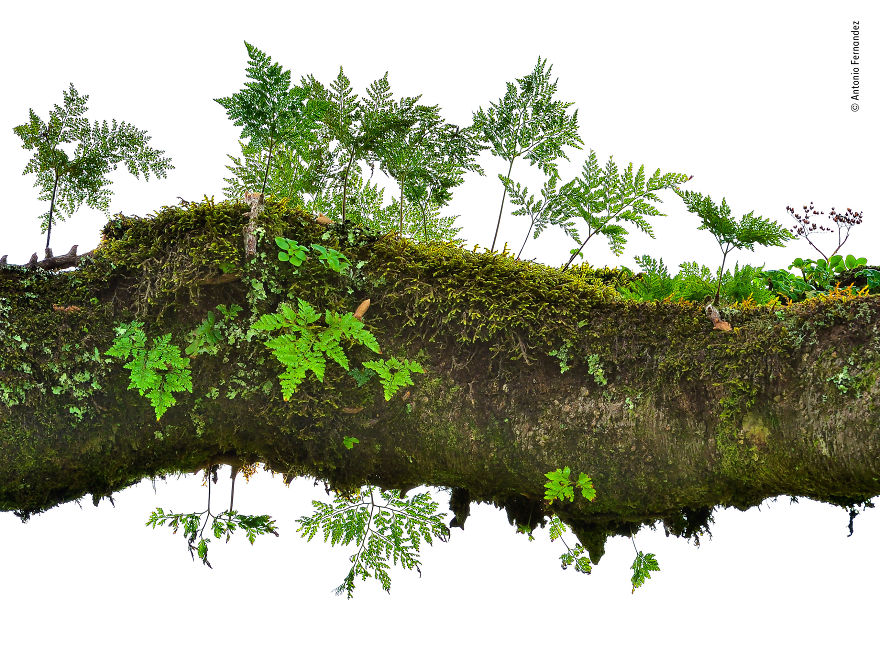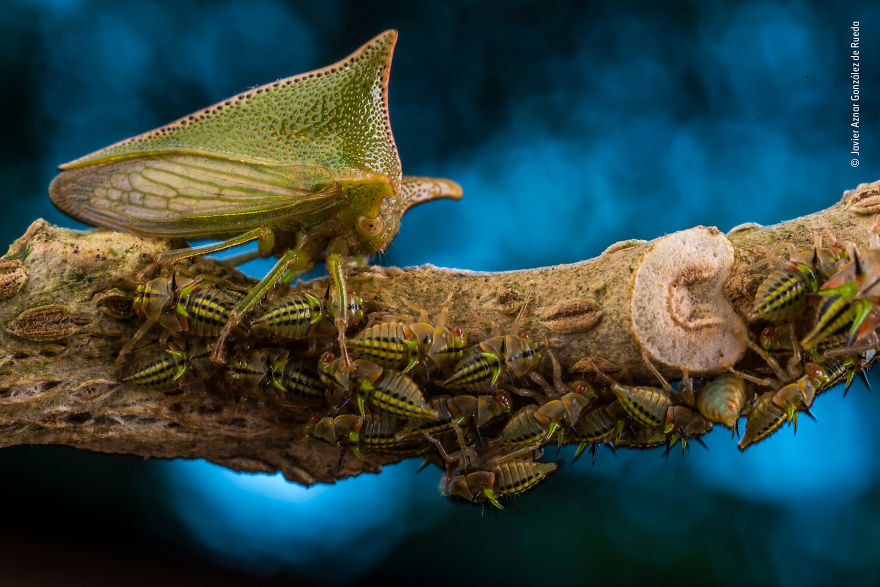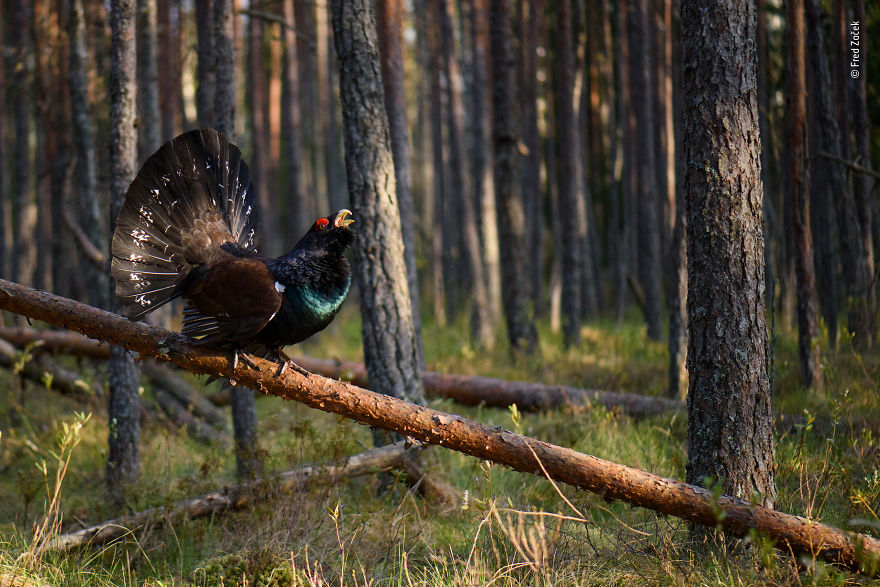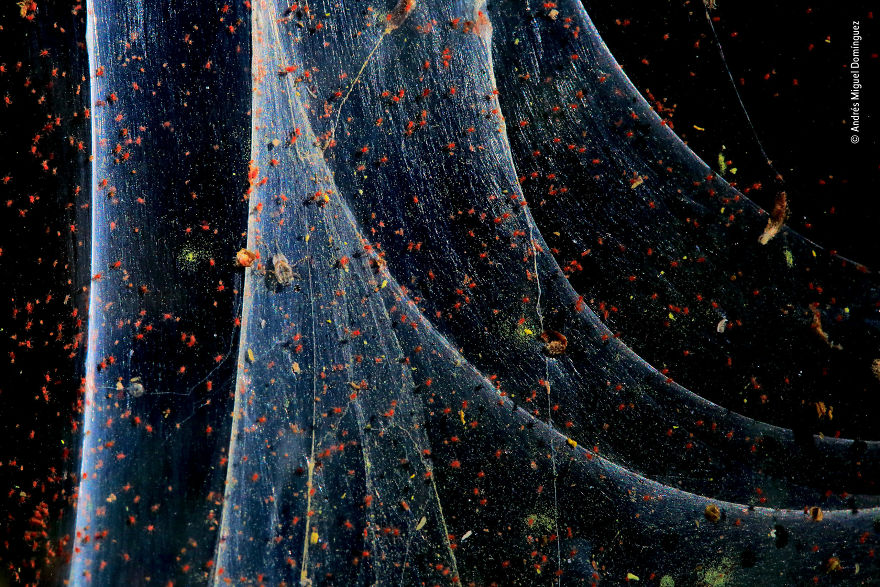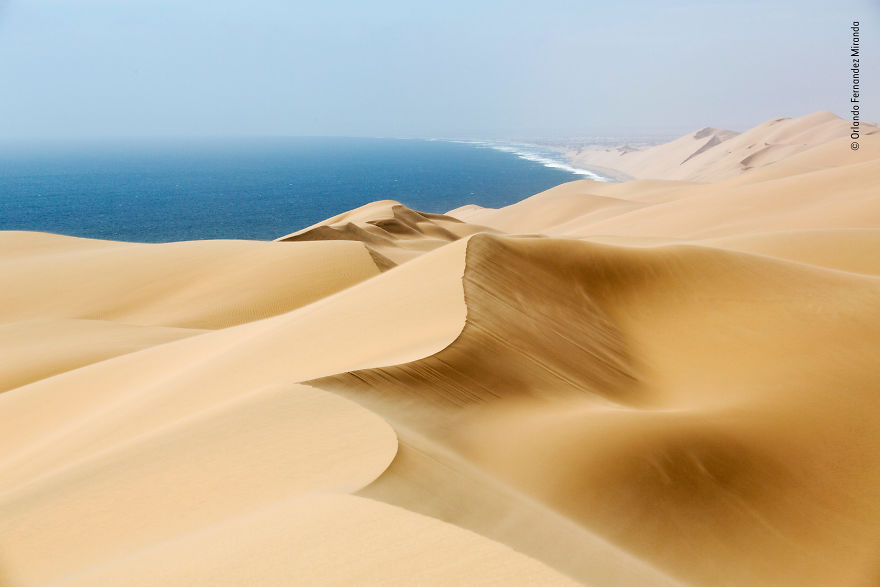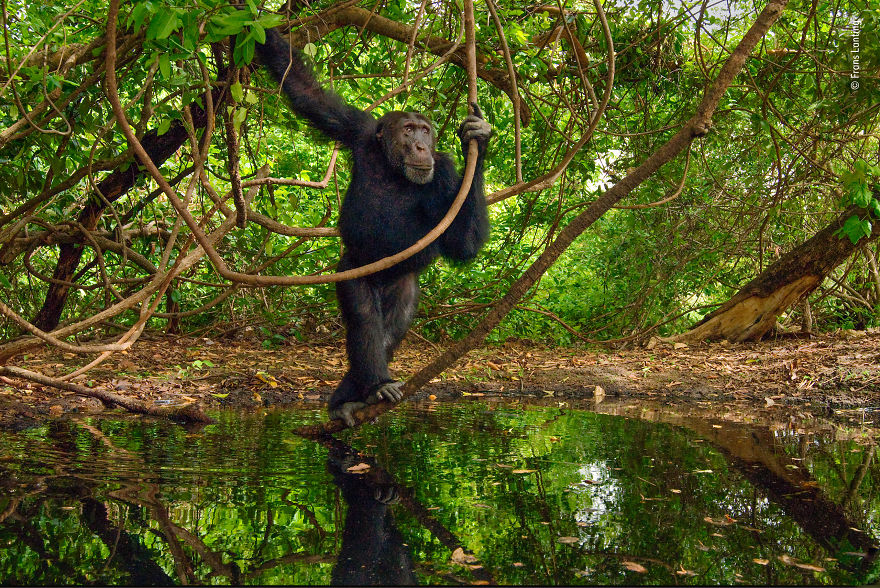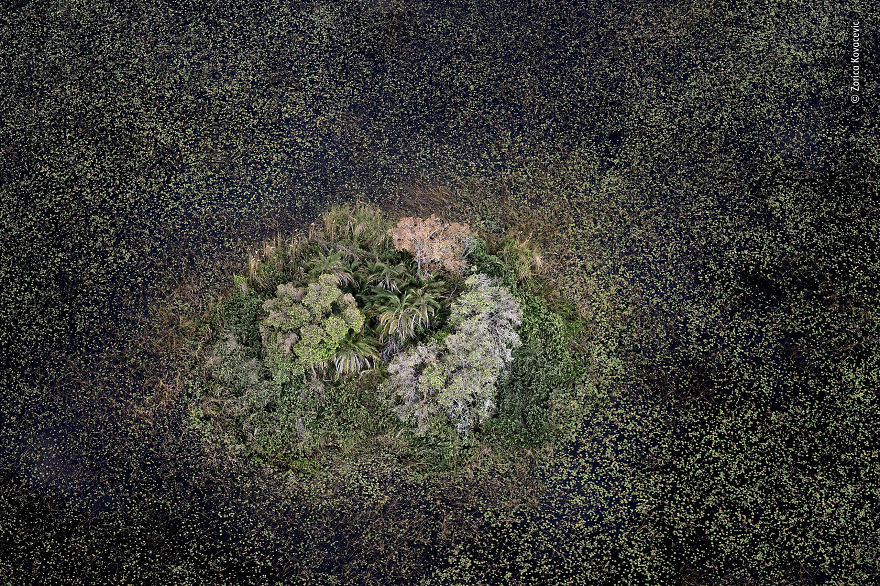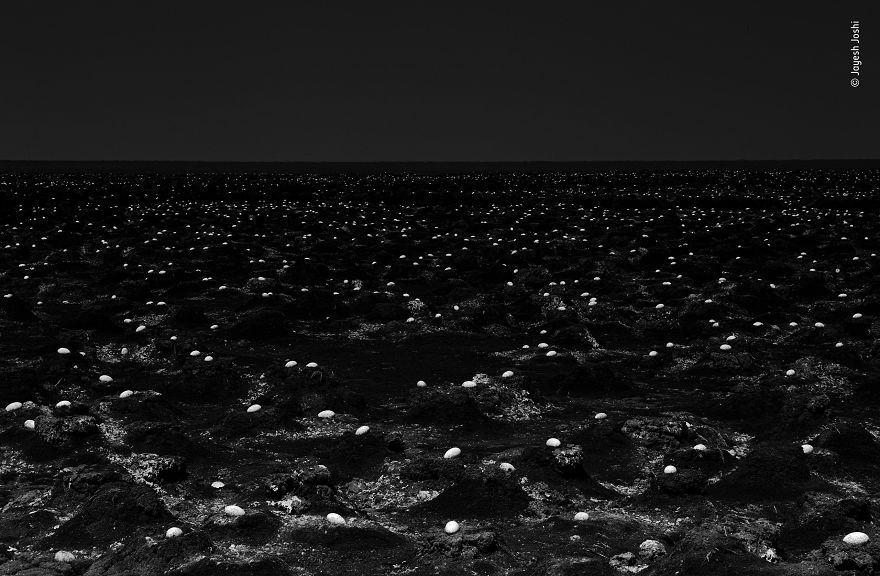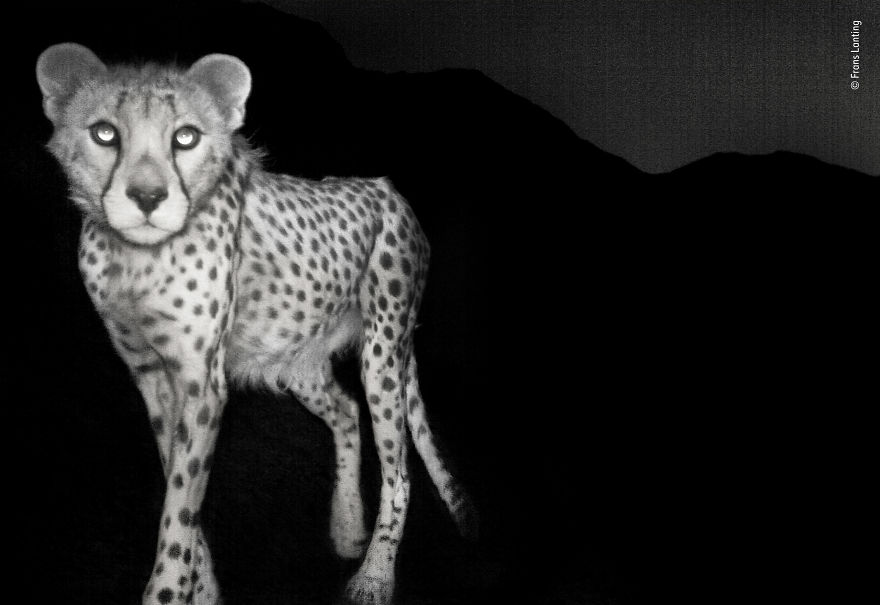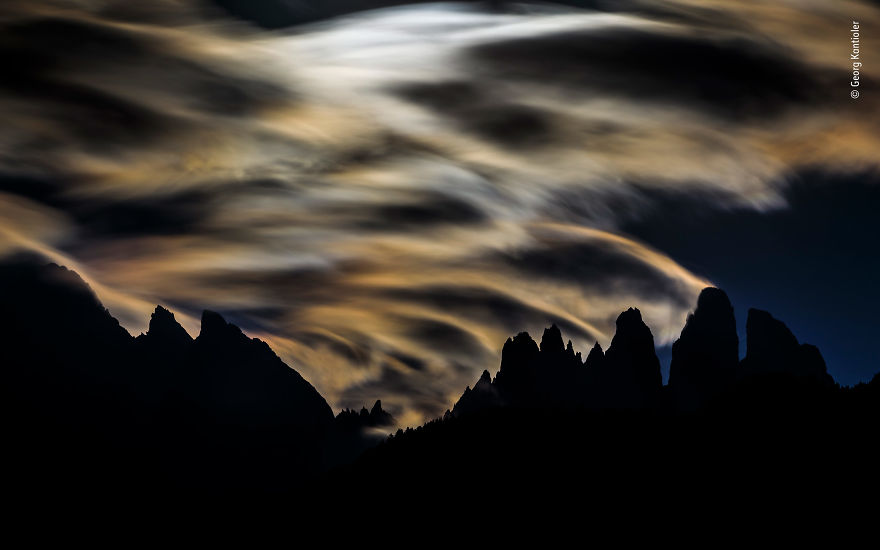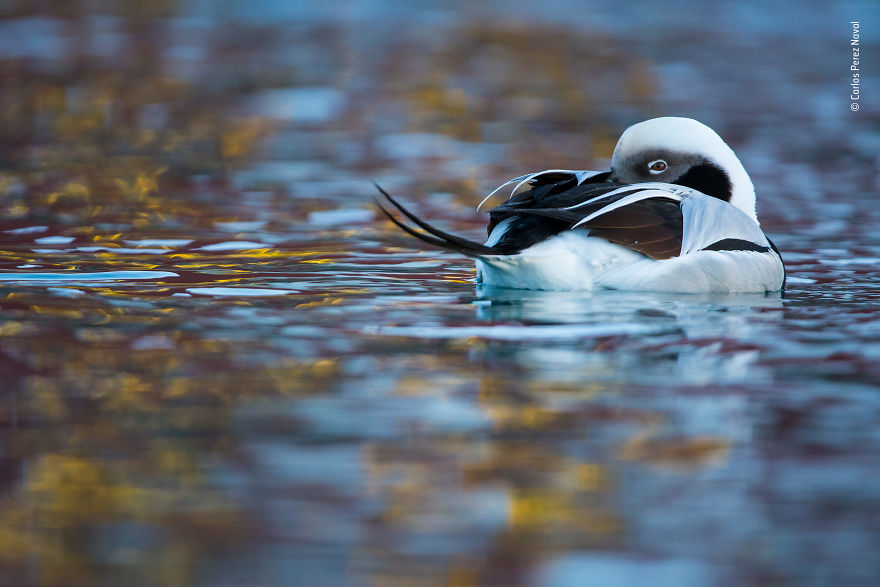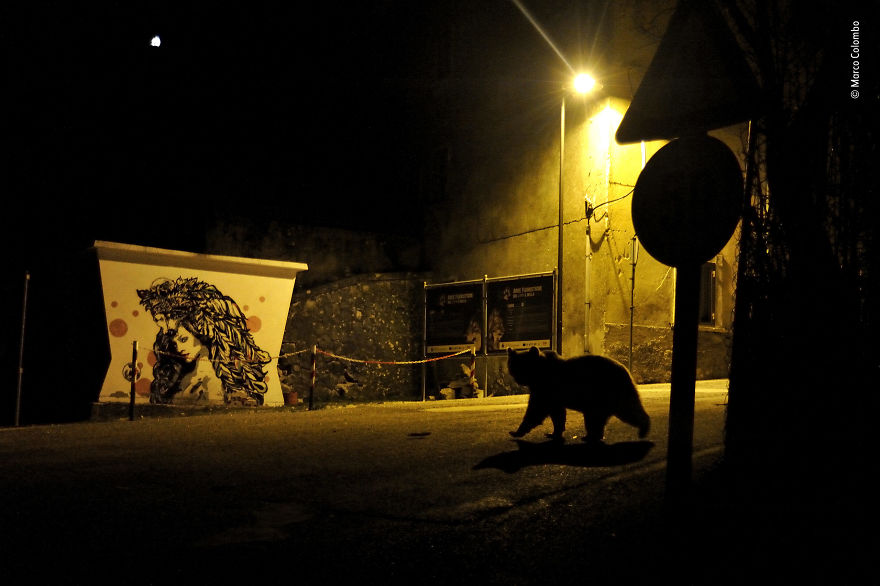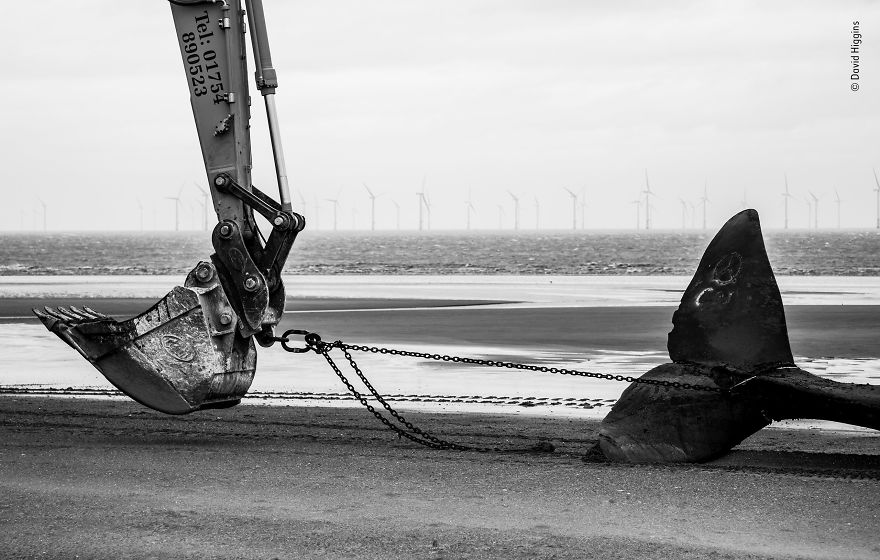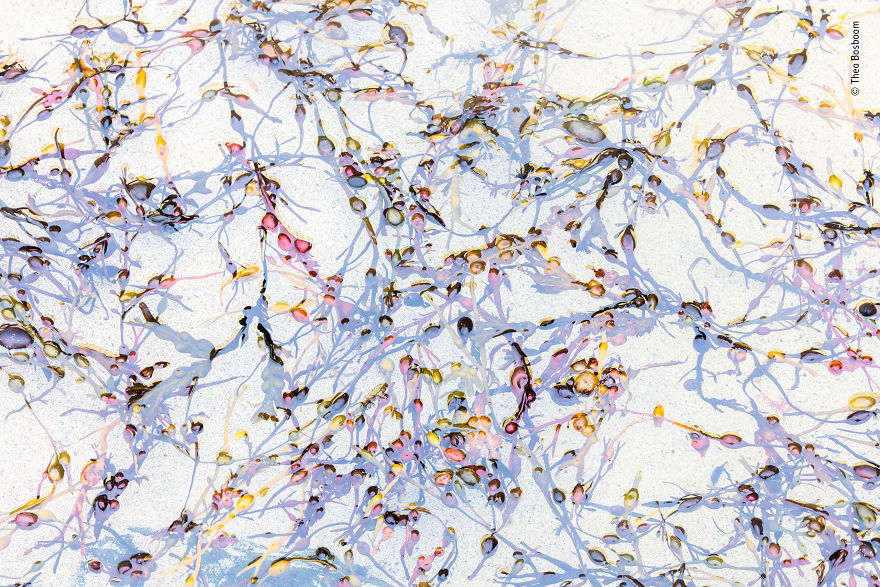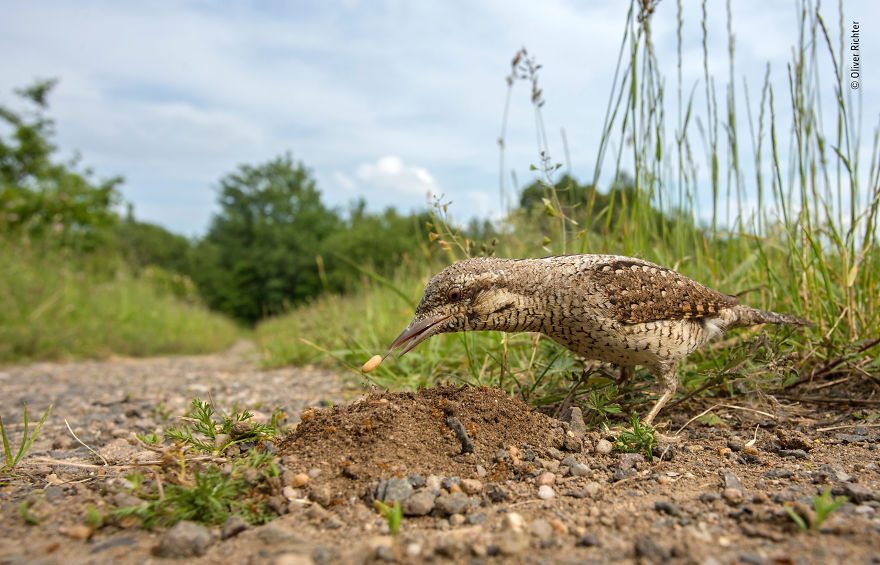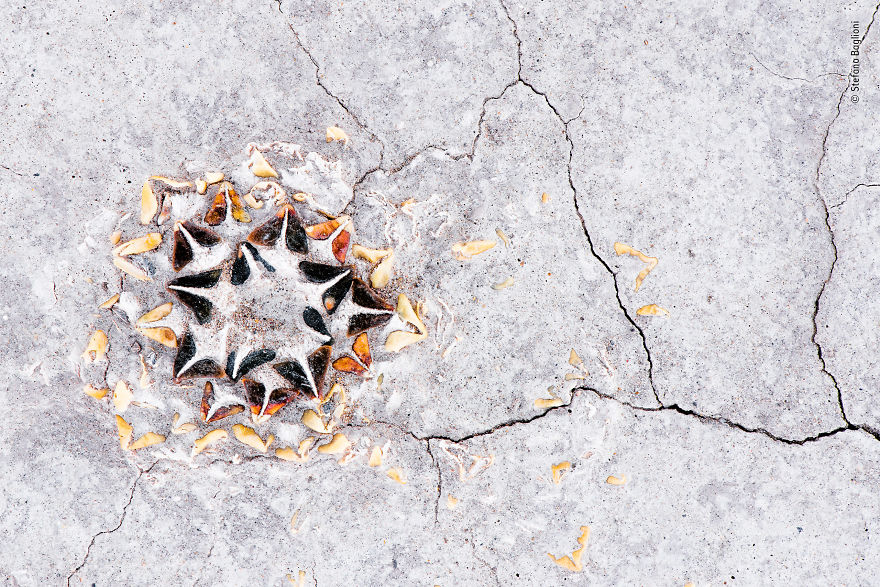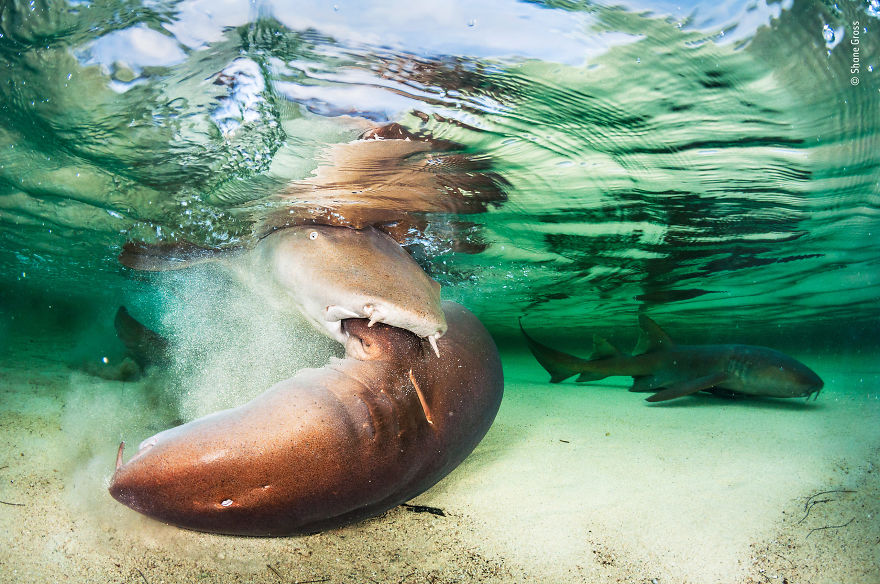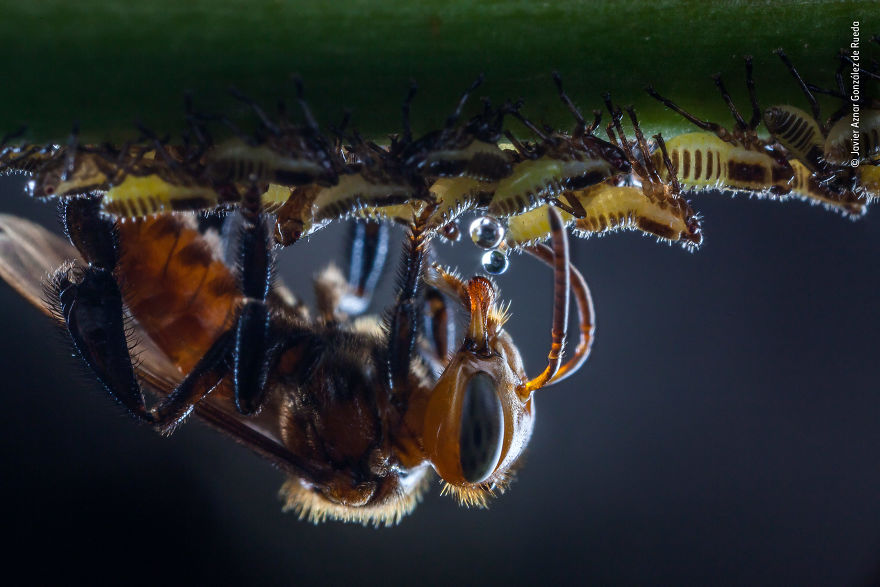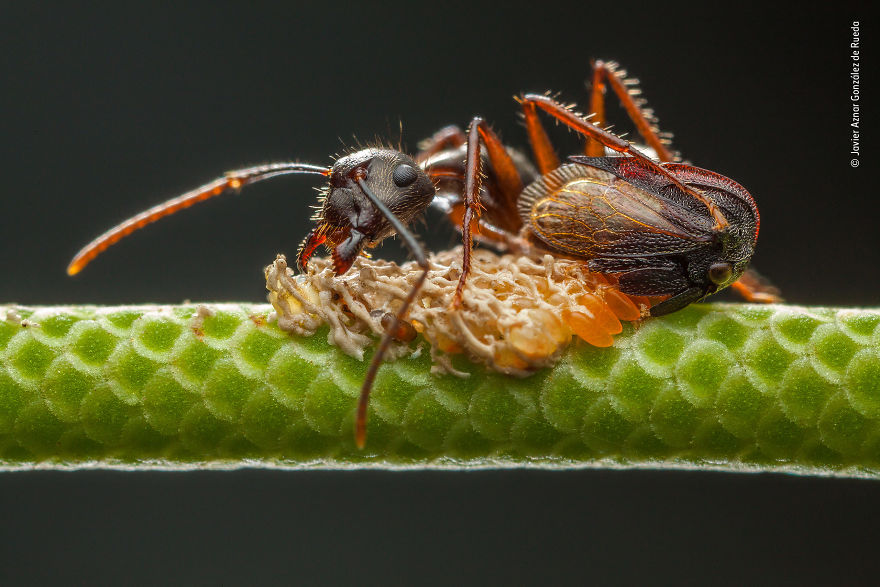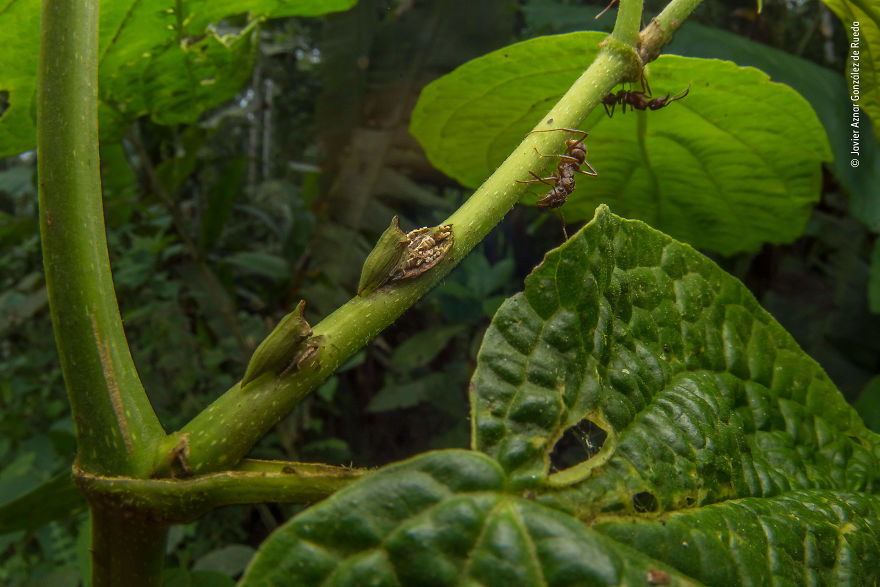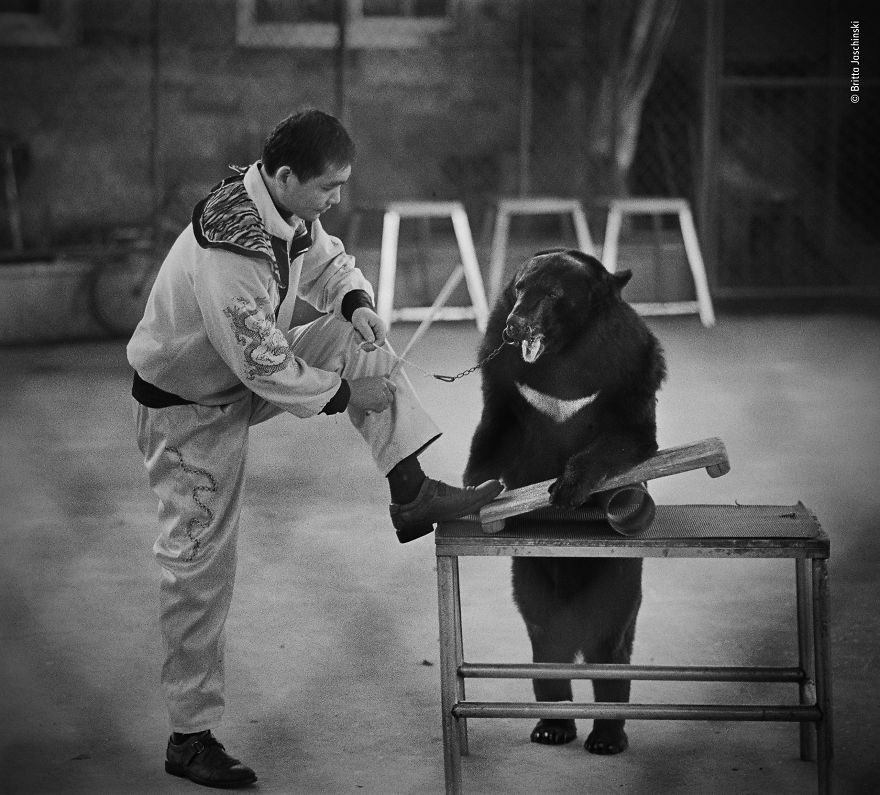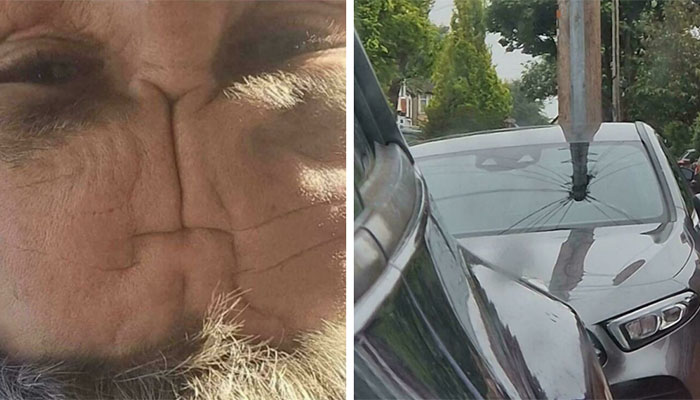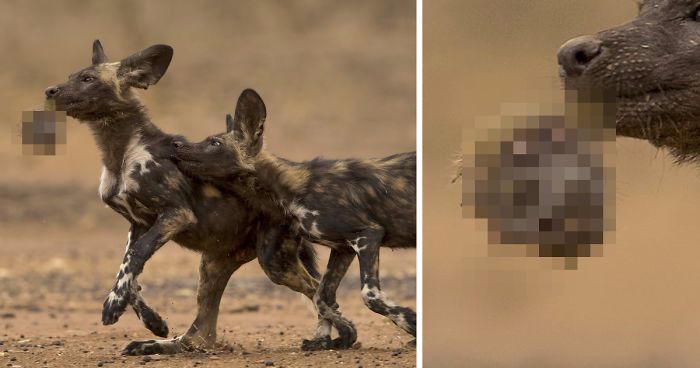
369Kviews
93 Of The Best Wildlife Photos Of 2018 (WARNING: Some Images May Be Too Brutal)
The wait is over. Everyone who was enjoying 2017, 2016 and 51 earlier 'Wildlife Photographer of the Year' (WPY) competitions has just received this year's biggest treat. London's Natural History Museum announced the winners of the 2018 photo contest, and the beautiful pictures reveal the abundance, beauty, resilience, and vulnerability of life on Earth.
The winning wildlife photography stills were chosen from more than 45,000 entries from 95 countries for their artistic composition, technical innovation and accurate interpretation of the natural world. The international jury awarded the grand title to Dutch photographer Marsel van Oosten for his shot, titled "The Golden Couple." The breathtaking picture features a pair of endangered golden snub-nosed monkeys in central China’s Qin Ling Mountains. "It is a symbolic reminder of the beauty of nature and how impoverished we are becoming as nature is diminished," Roz Kidman Coz, the chair of the judging panel, said in a press release. "It is an artwork worthy of hanging in any gallery in the world." Golden snub-nosed monkeys only live in this particular part of China, and their numbers are steadily decreasing, mainly because of habitat loss from commercial logging and firewood collection.
"As we were going through the pictures of animals and nature, we just kept coming back to this one," Roz Kidman Coz added. "It's almost like a stage set. I think what makes it are the colors and the lighting. These monkeys normally feed in the trees, but somehow Marsel managed to catch them on the ground, and he's carefully thrown a very gentle flash on to the scene to illuminate that amazing fur."
"This image was shot on my first trip to the Qinling mountains," Marsel van Oosten told Bored Panda. "I spent five days on this location. Since then I have been there two more times."
"I was planning to visit China for landscape photography but decided to check out what kind of wildlife China has apart from pandas. After doing some research, I stumbled across the snub-nosed monkeys. There are two main species; the golden snub-nosed monkeys and the black snub-nosed monkeys, and they both look amazing. Not only that, [but] they're also endangered species, so all the more reason to photograph them."
"My main objective for the golden snub-nosed monkeys was to show the beautiful long guard hairs on the back of one of the males," the photographer added. "To show those hairs I needed to be slightly behind the monkey, which made it difficult to show the face. Luckily, both monkeys in this image looked up at an altercation in the larger group of 50 monkeys - the perfect moment for me to get the animal photography shot I wanted."
"What makes this image better than most of the other ones I've shot is the fact that the background is near perfect: there is some light shining through the canopy in the upper right corner, the rock on which the male is sitting has some beautiful texture, and the trees to the left really complement the scene. Very often when the subjects adopt the perfect pose, the background is not great, or vice versa. What takes this image to the next level for me, is the light. I used an off-camera flash to bring out the color and the texture in the fur. My wife Daniella was standing on the right, just outside the frame, holding the flash which I controlled remotely. The almost painterly light was exactly what I wanted."
Van Oosten wanted to direct everyone's attention to the current mass extinction of plants and animals, too. "Unlike past mass extinctions, caused by events like asteroid strikes, volcanic eruptions, and natural climate shifts, the current crisis is almost entirely caused by humans. Ninety-nine percent of currently threatened species are at risk because of human activities." "If current rates of human destruction of the biosphere continue, half of all plant and animal species of life on earth will be extinct within 100 years."
"Perhaps one of the most striking elements of the present extinction crisis is the fact that the majority of our closest relatives - the primates - are severely endangered. About 90 percent of them lives in tropical forests, which are disappearing quickly. The IUCN estimates that almost 50 percent of the world's primate species are at risk of extinction. Overall, the IUCN estimates that half the globe's 5,491 known mammals are declining in population and a fifth are clearly at risk of disappearing forever with no less than 1,131 mammals across the globe classified as endangered, threatened, or vulnerable."
"The golden snub-nosed monkey is endangered due to habitat loss. For instance, lichens are the main staple of the monkey's diet and dead trees contain the most lichen. Unfortunately, dead trees are harvested, thus reducing the quality of the habitat and availability of food. The monkey is a highly selective feeder, so damage to its habitat seriously impacts the species. There are less than 4,000 of these animals left."
"Successful wildlife conservation starts with awareness, and most people don’t even know this species exists. I hope that my photograph will help to spread awareness about this species and that people will realize that not only the rhinos, tigers and polar bears are worth worrying about."
More info: nhm.ac.uk
This post may include affiliate links.
"The Midnight Passage" By Vegard Lødøen, Norway, Highly Commended 2018 Animals In Their Environment
‘A dream came true when I took this picture,’ says Vegard. After years of searching, he had finally found a riverside location visited by the deer of Valldal. After partly submerging his camera in a waterproof box, he set up a flash above and below the water, along with motion sensors. Near midnight, a male crossed the river – the camera capturing its proud pose.
After moose, red deer are the largest species of deer. Only the males have antlers, which have been known to grow to more than a metre in length and weigh up to five kilogrammes. At the end of each winter they shed their antlers, which are made of bone – when spring comes they regrow, protected by a soft covering known as velvet.
"Cool Cat" By Isak Pretorius, South Africa, Highly Commended 2018 Animal Portraits
‘I love creating photos with impact,’ says Isak, who is often on the lookout for Zambia’s most iconic animals. He was photographing a pride of lions when this lioness wandered off. Anticipating it was going for a drink, he positioned himself by the nearest waterhole. It then appeared through the long grass, framed by a wall of lush green.
Lions kill more than 95 per cent of their prey at night, and spend the majority of the day resting. Although they drink readily when water is available, they are also capable of consuming sufficient moisture from their prey and plants – making them perfectly adapted to their arid landscape. Yet despite this, lion numbers are decreasing significantly.
Elephants At Twilight By Frans Lanting, The Netherlands, Winner 2018 Wildlife Photographer Of The Year Lifetime Achievement Award
One evening during Botswana’s dry season, I waded into a water hole to capture a shimmering reflection of a gathering of elephants at twilight, with a full moon suspended in a luminous pink sky. The image is my homage to the primeval qualities of southern Africa’s wilderness, the grandeur of elephants, and the precious nature of water in a land of thirst.
"Smoke Bath" By Tom Kennedy, Ireland, Highly Commended 2018 Urban Wildlife
Tom saw the rook as he glanced out of his living room window. Wings spread, the bird was using the neighbour’s chimney pot to smoke bathe. Realising the opportunity – and knowing the heat and smoke would only allow the rook to remain for a few minutes – he quickly took his photograph before leaving it to enjoy its smoky bath.
Rooks are incredibly intelligent creatures and smoke bathing is likely to be a learned behaviour, rather than instinct. The smoke helps the birds to fumigate their feathers, ridding them of irritating parasites such as lice, mites and ticks. The related jackdaw has even been seen fumigating itself over smouldering cigarette ends.
"Pipe Owls" By Arshdeep Singh, India, Winner 2018 10 Years And Under
While driving with his father through the city, Arshdeep saw a bird disappearing into an old waste-pipe. He asked to stop the car, then primed his father’s camera and telephoto lens, kneeling up on the seat and resting it on the half-open window at eye-level. It wasn’t long before a spotted owlet emerged, followed by a second. Both stared right at him.
Spotted owlets traditionally nest in tree hollows, where the female lays up to five eggs. Although common in the Punjab, these small birds are rarely seen in the day, as they are nocturnal. This breeding pair – the larger female on the left – is among those using urban nesting sites following widespread deforestation in the region.
"City Fisher" By Felix Heintzenberg, Germany / Sweden, Highly Commended 2018 Urban Wildlife
The rusty metal rod at the opening of a sewerage outlet pipe was a favourite perch for kingfishers, giving them a view of the fish below. Felix visited the spot many times to study them. Seeing the photographic potential of the colourful scene, he used a gentle flash to highlight this particular bird against the dark opening.
Excellent hunters, kingfishers are also good indicators of high water quality. With better water treatment and bans on pollutants in some cities, these birds are slowly returning to urban areas. Kingfishers can struggle to find natural fishing perches in cities and so use whatever they can find, including shopping trollies and scrap metal.
I like how he used the black tunnel to emphasise the Kingfisher. Catches the eye immediately.
"Ahead In The Game" By Nicholas Dyer, Uk, Highly Commended 2018 Behaviours Mammals
After tracking this pack of African wild dogs on foot for more than three kilometres, Nicholas looked on as this pair of pups played a macabre game with the remains of their baboon breakfast. ‘Half of me felt disturbed by the disrespect this deceased fellow primate was receiving,’ he says. ‘The other half was caught up in the infectious joy of the puppies.’
The endangered African wild dog, also known as the painted wolf, is best known for hunting antelope, such as impala and gazelle. However, its main prey can vary from pack to pack and will include smaller animals such as this baboon. Known for their intricate social structures, painted wolf pups old enough to take solid food are given priority at kills.
"A Bear On The Edge" By Sergey Gorshkov, Russia, Highly Commended 2018 Animals In Their Environment
For Sergey, this photograph of a solitary polar bear walking steadily along a glacier is ‘a symbol of Franz Josef Land’. It speaks of the vulnerability of an iconic animal that depends entirely on this frozen wilderness. His powerful composition gives no hint of the biting wind and icy sea spray he had to endure while taking it.
The Russian Arctic National Park has recently been expanded to include the 191 uninhabited islands of Franz Josef Land. With a lack of data for this remote region, both polar bear numbers and rates of sea ice decline are unknown. This presents problems for polar bear conservation, as researchers need data to understand the impact of climate change here.
"Argentine Quickstep" By Darío Podestá, Argentina, Highly Commended 2018 Animal Portraits
Surveying the scene, Darío was captivated by ‘the fragility of the chick’ as it used its oversized legs to scurry after its parents. After an uncomfortable crawl through a salt field in the rain and mud, Darío trained his lens on the speckled fluff of the chick, framing it against the dramatic background of salt and sky.
Two-banded plover chicks will leave their nests almost immediately after they hatch, relying on their stilt-like legs to keep pace with their parents and to evade potential predators. Their long legs also keep their soft down away from the wet ground. After four or five weeks, they will grow large enough to fly away from the care of their mother and father.
"Kuhirwa Mourns Her Baby" By Ricardo Núñez Montero, Spain, Winner 2018 Behaviours Mammals
Kuhirwa, a young female mountain gorilla, would not give up on her dead baby. Initially she cuddled and groomed the tiny corpse, carrying it piggyback like the other mothers. Weeks later, she started to eat what was left of it. Forced by the low light to work with a wide aperture and a narrow depth of field, Ricardo focused on the body rather than Kuhirwa’s face.
From elephants stroking the bones of deceased family members to dolphins trying to keep dead companions afloat, there is an abundance of credible evidence to show that animals visibly express grief. Kuhirwa’s initial actions can be interpreted as mourning, her behaviour showing the pain of a mother who has lost her child.
"Home On The Range" By Karine Aigner, Usa, Highly Commended 2018 Urban Wildlife
Karine quietly watched this bobcat raise her kittens beneath the decking of a remote ranch house over several months. As they grew, Karine earned the bobcat’s trust, enough that the mother sometimes left her young with her while she went to hunt. ‘Animals can teach us so much,’ Karine says. ‘She taught me what trust was.’
Bobcats usually have one litter in spring with up to six kittens. The kittens stay with their mother before separating from her in winter. They eat mainly small mammals, especially rabbits and birds, and are often considered a nuisance. Despite being hunted for sport and trapped for their pelts, populations have remained resilient.
"The Golden Couple" By Marsel Van Oosten, The Netherlands, Grand Title Winner
As the group of Qinling golden snub-nosed monkeys jumped from tree to tree, Marsel struggled to keep up, slipping and stumbling over logs. Gradually he learned to predict their behaviour, and captured this male and female resting. With the Sun filtering through the canopy, they are bathed in a magical light, their golden hair glowing against the fresh greens of the forest.
This pair belongs to a subspecies of golden snub-nosed monkey restricted to the Qinling Mountains. Among the most striking primates in the world, these monkeys are in danger of disappearing. Their numbers have steadily declined over the decades and there are now fewer than 4,000 individuals left.
"The Bigger Bite" By Chris Brunskill, Uk, Highly Commended 2018 Behaviours Mammals
Perching in a small motor boat on a fast-flowing river, Chris steadied his long lens on this battle. The jaguar had come across the yacaré caiman by chance – accidentally stepping on the reptile after a failed charge at a capybara. Without hesitation the jaguar pounced, overcoming its monstrously large prey in minutes.
The yacaré caiman and jaguar are both top predators in the Pantanal Wetlands, and struggles like this are not unusual. Though excellent swimmers, jaguars tend to stalk or ambush their prey on the ground, subduing them with their formidable bite. After they have delivered their final blow, they will often drag carcasses to shelter to enjoy their meal in peace.
"Lounging Leopard" By Skye Meaker, South Africa, Young Wildlife Photographer Of The Year
Notoriously shy and elusive, the resident leopards of the Mashatu Game Reserve are hard to spot. But this time Skye was in luck. After tracking the leopards for a few hours, he came across Mathoja – a well-known female. In a fleeting moment, just before the leopard nodded off, Skye captured a peaceful portrait of this majestic creature.
Named by local guides, Mathoja means ‘the one that walks with a limp’ – a title given to her after a serious leg injury as a cub. Although her chances of survival were slim, Mathoja is now a healthy adult. She is one of the lucky ones – this species has been classed as vulnerable and many leopards are illegally hunted for their highly desirable skins.
"Small World" By Carlos Perez Naval, Spain, Highly Commended 2018 11–14 Years Old
Growing on the low stone wall of a house, this pyrolusite mineral looked ‘like oriental drawings on rice paper,’ says Carlos. Some resembled trees, others mountains. Crouching to capture the scene, he waited half an hour for this ladybird to wander over. For Carlos, the image ‘shows the beauty of small and common places when you stop to look closely’.
Manganese dioxide, also known as pyrolusite, is a mineral commonly found when water percolates through the cracks of sedimentary rocks. A closer look reveals the minute fissures from which the pyrolusite mineral emanates, spreading out in a self-repeating pattern. The ladybird is a twenty-two spot, and unusually feeds on mildew rather than aphids.
"Kitten Combat" By Julius Kramer, Germany, Highly Commended 2018 Behaviours Mammals
It had been a year since Julius had set up his camera trap and he only had two records of a Eurasian lynx to show for it. Overcoming problems with failed batteries, deep snow and spider webs he was on the brink of giving up when his luck changed. As soft light hit the snow-clad branches, two kittens turned up to play, rewarding Julius with nearly 100 images.
After several illegal lynx kills in Bavaria, catching sight of these shy, elusive and desperately endangered animals is a sign of hope that the population is hanging on. The Eurasian lynx has been, and continues to be, intensively hunted for its fur and perceived as a threat to livestock. Many of the current populations are the result of re-introductions.
"Reflective Sunset" By Sri Ram Mohan Akshay Valluru, India, Highly Commended 2018 15–17 Years Old
Surveying the scene, Akshay decided to use the in-camera multiple-exposure mode. He captured two frames – the first of the dramatic dusk sky, and the second of the silhouetted impala. The camera seamlessly merged them, and the result is this creative illusion of a pool of water, leaving the viewer wondering why the sky is reflected in the water but the impala isn’t.
Impalas are one of the most common antelopes in Africa. Young males, like this one, often wander the savannah, usually after being evicted from mixed mating herds by dominant males. They will herd together until they are strong enough to establish a territory of their own, complete with their own group of females.
"School Visit" By Adrian Bliss, Uk, Highly Commended 2018 Urban Wildlife
Lying ruined and looted, the city of Pripyat is within the Chernobyl Exclusion Zone, which was established after the nuclear disaster of 1986. Devoid of humans, the city has surrendered to nature. This red fox trotted into the derelict classroom, stopping briefly on the carpet of child-sized gas masks just long enough for a picture. Seeing it was ‘completely unexpected,’ says Adrian.
The long-term effects of the Chernobyl disaster are still far from clear. But, in the absence of humans, Pripyat appears to be thriving. The forest encroaches on all sides of the city, encouraging wild boar, beavers, otters, deer and moose. With radiation levels still high, only time will tell if this natural regeneration is a sign of hope for this bleak place
"One In A Million" By Morgan Heim, Usa, Highly Commended 2018 Wildlife Photojournalism
Morgan found this black-tailed doe, its eyes not yet dulled by death, by a road. Returning at dusk, she brought flowers to arrange a funeral wreath around the deer as a roadside memorial. ‘I wanted it to have one last moment of grace in this world,’ she says. ‘To tell it “I see you and you were loved”.’
With an increasing number of cars on the road, roadkill is a common sight in America and it is estimated drivers kill more than a million vertebrates every day. Solutions such as wildlife overpasses, tunnels and reduced speed zones have decreased animal fatalities, but it is still a pressing issue.
Michel D’oultremont, Belgium, Winner 2018 Rising Star Portfolio Award
Dream Duel
As storm clouds gathered over the forest, the roaring sound of two competing red deer stags echoed through the trees. Well matched, neither challenger would walk away, so the contest escalated to a dramatic clash of antlers. Michel, hiding behind a tree under a camouflage net, had time to capture just a few frames before the stags separated.
Every autumn, young males, known as bucks, begin the annual search for a mate and compete to attract female attention. In preparation, males will often binge on fallen conkers, bulking up for their displays of strength. During the rutting season, bucks will stand side by side, assessing their rivals before locking antlers and going into battle.
"The Meerkat Mob" By Tertius A Gous, South Africa, Highly Commended 2018 Behaviours Mammals
Rearing its head, an Anchieta’s cobra lunged towards two meerkat pups. Reacting instantly, their 20-strong pack ran back to the warren and split into two – half ushering the pups away, the other half advancing towards the snake, growling and fluffing up their coats. Focusing on the snake’s classic profile, Tertius caught the meerkat mob’s fear and aggression.
This scene is rare – there are few records of an Anchieta’s cobra attacking a meerkat pack. In a group, the mammals have the advantage, using a system of alarm calls to notify others of predators and to co-ordinate a mobbing of the attacker. This snake was just an opportunistic hunter looking to snatch one of the p ups before the pack arrived.
"Eye To Eye" By Emanuele Biggi, Italy, Highly Commended 2018 Animals In Their Environment
As Emanuele walked along the beach, the stench of rotting sea lion carcasses was almost unbearable. He had seen insects feeding on the corpses, but knew when he saw the iguanas eating the insects that he’d found something interesting. Lying on the sand, choked by the vile smell, he caught this iguana peeping through an eye socket.
With a colony of 15,000 South American sea lions nearby, the beach of Paracas National Reserve is a graveyard for the ones that have succumbed to illness or injury. Others die in occasional mass events triggered by El Niño, where ocean temperatures rise temporarily. The iguanas survive here on the sand, where little vegetation grows, by feeding on insects instead.
Ghost Trees By Frans Lanting, The Netherlands, Winner 2018 Wildlife Photographer Of The Year Lifetime Achievement Award
A river once flowed through this remarkable place in the dunes of Namibia, but it changed course. The camelthorn trees that once flourished here are now just sculptural skeletons on a rock-hard clay pan. But backed by soaring dunes glowing with sunrise light, they are monuments to a time of abundance.
"Mud-Rolling Mud-Dauber" By Georgina Steytler, Australia, Winner 2018 Behaviours Invertebrates
Georgina was at the waterhole early to photograph birds, but her attention was diverted to these industrious wasps. They were busy at the water’s edge, rolling the soft mud into balls and carrying them to their nearby nests. For a good angle, she lay in the mud, then pre-focused on a likely flight path and began shooting continuously.
The female mud-dauber wasps use the mud balls to build their nests. Collecting them into clusters, they then carve chambers inside the balls into which the females lay their eggs. Before closing each one up, the wasps insert the paralysed bodies of orb-weaving spiders as food for their larvae when they hatch.
Autopsy By Antonio Olmos, Mexico / Uk, Highly Commended 2018 Wildlife Photojournalism
A young Siberian tigress is laid out, awaiting an autopsy. Its emaciated body was found under a car, missing a forepaw. Undoubtedly, it had chewed off its own foot after being caught in a poacher’s trap. Unable to hunt, it would have slowly starved to death. For Antonio, seeing such a majestic animal reduced to this was heartbreaking.
Siberian tigers have been hunted almost to extinction, with barely 360 left in the wild. Despite being classified as endangered for the past few decades, their numbers continue to decline, as they are hunted by poachers and their homes are lost to deforestation. Human disregard continues to decimate tiger populations, leaving their fate hanging in the balance.
"Night Snack" By Audun Rikardsen, Norway, Highly Commended 2018 Under Water
Large numbers of herring were overwintering in the northern fjords, attracting hundreds of predators and night fishing boats. The killer whales had realised that the sound of nets being hauled up meant the possibility of an easy meal. Audun asked the fishermen to angle their strongest light into the water, to capture his shot.
Killer whales are the largest members of the dolphin family. Although one species, it’s now thought there are several kinds living in different areas, using specific hunting strategies and social structures. This is a male eastern North Atlantic form, which is known to work together with other killer whales to herd fish into dense shoals.
Tigerland By Emmanuel Rondeau, France, Highly Commended 2018 Animals In Their Environment
Accompanied by rangers, Emmanuel had climbed 700 metres to set up eight cameras, selecting areas with previous tiger sightings and evidence of recent use such as tracks, scratches and faeces. ‘The forests were nothing like I had ever seen,’ he says. ‘Every species was something new.’ Twenty-three days later, this Bengal tiger gazed directly into one of his cameras.
In the Kingdom of Bhutan, tigers are making a comeback. There are now thought to be 103 tigers living in the wild there – almost a third more than the last count in 1998. As Bhutan has developed, the country has created a network of wildlife corridors from one national park to the next to allow wildlife to roam relatively undisturbed.
"Overview" By Cameron Mcgeorge, New Zealand, Highly Commended 2018 15–17 Years Old
Cameron built his first drone with his father in 2013, all the while dreaming of photographing whales from the air. Four years later he achieved his ambition, capturing this spectacular shot of a humpback whale, its calf and their accompanying male escort. For Cameron, this image is a unique perspective of ‘nature’s most breathtaking subjects’.
These whales are part of a group known as the Tongan tribe, which is classed as endangered. It lives isolated from other breeding groups, and so numbers have fallen dramatically. Sightings such as this bring hope that the population is recovering. This calf is just a few days old, and the male, hoping to mate with the mother, will defend them both from predators.
"Flight" By Sue Forbes, Uk, Highly Commended 2018 Behaviours Birds
After days of rough seas, Sue woke to find tranquil water and a single young booby circling. ‘Suddenly, a fish leapt out,’ she says, ‘and down came the booby’. With quick reactions, her camera already poised, she captured the fleeting moment of the bird in hot pursuit, reflected in the painterly water.
Boobies are extraordinarily lean, aerodynamic birds. Adults are nimble enough to catch moving targets, but this juvenile might just be practicing. The fish has broken the surface, and is gliding on its stiff pectoral fins. It does this to escape underwater predators, such as tuna and marlin, but this makes it vulnerable to attack from above.
Boobies :-) :-) My childish sense of humour....apologies all hahaha
"The Catch" By Robert Irwin, Australia, Highly Commended 2018 11–14 Years Old
Robert was trudging through dense woodland at night when he saw the huntsman spider, dangling in mid-air, clutching a dead frog. ‘It was fascinating to see it manipulating the frog with its front legs while gripping it with its fangs,’ he said. ‘To see it predating an animal so large was extraordinary.’
Huntsman spiders don’t build webs. Instead they hunt their prey, usually stalking large insects and other spiders, but also occasionally frogs. This one probably fell off a branch while struggling with the frog, and was left hanging dramatically from a silk anchor line. It had set this up as a precaution against such an event.
"Witness" By Emily Garthwaite, Uk, Highly Commended 2018 Wildlife Photojournalism
When Emily approached, the young sun bear hurried to the front of its filthy zoo cage, seemingly eager to interact with her. Yet when it spotted its keeper, its demeanour changed. As the keeper poked and provoked the bear ‘he started screaming,’ said Emily. ‘I’ve never heard such an awful noise, it was very frightening.’
Sun bears are the world’s rarest bears, yet are commonly exploited for their gall bladders and bile. In traditional Chinese medicine the bile is thought to treat a range of ailments, from hangovers to hepatitis. Cubs are farmed, sometimes living permanently with a catheter used to drain the bile.
Ice-Cave Blues By Georg Kantioler, Italy, Highly Commended 2018 Earth’s Environments
Last time Georg tried to enter this ice cave, it was deemed too dangerous, due to excessive ice melt. But on this cooler day he made it in. With the sound of dripping water and the creak of the glacier shifting, he used natural light to capture the interior, including the distant larch trees and alpine scenery. ‘A breathtaking yet daunting experience,’ he says.
Glacier caves are often carved out by water running through or under a glacier’s ice. Unlike ice caves that are present all year round, glacier caves are seasonal. Global warming has caused some glaciers to completely disappear and others to retreat, meaning caves such as these are becoming less frequent or inaccessible.
"The Vision" By Jan Van Der Greef, The Netherlands, Winner 2018 Black And White
From the garden of his hotel, Jan noticed that when the hummingbirds rotated around this plant’s spikes, and closed their tails for a moment, a beautiful cross appeared. From the low position of his wheelchair, it took him two half days to get the perfect shot, ‘their fast movements to me symbolise the freedom of our imagination,’ he says.
Endemic to Peru, the bearded mountaineer hummingbird spends its day feeding on sweet, nectar-rich plants. Unlike the hummingbird, the showy, dramatic torch lily seen here is not native to the region, but has become a popular food source for these hummingbirds. They are attracted by the delicious nectar of its bright red flowers.
"The Sad Clown" By Joan De La Malla, Spain, Winner 2018 Wildlife Photojournalism
Timbul, a long-tailed macaque, puts his hand to his face to try and relieve the discomfort of his mask, while being trained to stand upright for a street show. Sights such as this are common in Indonesia, and Joan spent a long time gaining the trust of the monkey’s owners. ‘They are not bad people,’ she says. Most are earning money to send their children to school.
Macaques like Timbul live in awful conditions, deprived of the social relationships they need to thrive. They work many hours, dancing and riding bikes, movements that are unnatural and uncomfortable. Animal charities are working to enforce legislation that makes it illegal to take young monkeys from the wild or to trade in them without a permit.
This is heart breaking, sad, disgusting, terrible. My heart aches!!
Eyes Of The Night By Frans Lanting, The Netherlands, Winner 2018 Wildlife Photographer Of The Year Lifetime Achievement Award
I like to get eye to eye with the animals I photograph and portray them as individuals. I followed this pride of lionesses for several weeks, and got to know their most intimate moments. Here at dusk, with eyes and ears scanning the bush, they are awake and ready to hunt.
"Bear Territory" By Marc Graf, Austria, Highly Commended 2018 Animals In Their Environment
The brown bears of Notranjska Regional Park are cautious, and so avoided the area where Marc had set up his camera trap, aware something had changed in their environment. However, after 14 long months the box protecting the camera lost all its scent, and the bears finally acclimatised. One morning a young bear strolled up the hill at sunrise ready for its close-up.
Brown bears were once found throughout much of Europe, but today their range is greatly diminished and fragmented. While the trend for Slovenia’s brown bear populations shows a steady growth, just a short distance away in Marc’s Austrian homeland there are very few bears left – their biggest threat is conflict with humans.
I know they are mostly afraid of humans but when I'm walking my dog in the forest nearby I am constantly looking around me... I do NOT want to meet a bear, or a moose for that matter! I love walking in the forest but now I've gotten more and more paranoid so I can't really enjoy it anymore, not when I'm alone at least... :c
"Late-Night Feed" By Susan Scott, South Africa, Highly Commended 2018 Wildlife Photojournalism
It took Susan two years to convince the orphanage to allow her access – the bond between rhino calves and their carers is fiercely protected. Moving quietly, she was careful not to disturb these two, Nandi and Storm, as they were fed by their carer under infrared lamps to minimise heat loss. For Susan, this image is ‘a peaceful moment amid tremendous violence’.
Despite conservation efforts, black rhinos remain critically endangered, as demand for their horn for use in alternative medicine fuels poaching. Nine months after Susan took her photograph, the orphanage was attacked, the carers assaulted and two white rhinos killed. Nandi and Storm were spared – their horns deemed too small to be worth the trouble.
"Looking For Love" By Tony Wu, Usa, Highly Commended 2018 Animal Portraits
Tony was on a mission – he wanted to capture an image that portrayed the ‘unique expression and burning desire of a male in love’. His subject was the Asian sheepshead wrasse, a fish found near Sado Island. After years of planning, and amid torrential rain, he finally found an earnest suitor for his portrait. ‘This,’ he says, ‘is the face of a fish looking for love’.
If there are no dominant males in the school of Asian sheepshead wrasse, larger, older female wrasse will change sex. The transformed fish will use its bulbous head, which turns red in the breeding season, to gain control over other males, attracting a harem of females in the process. It will then mate with these females dozens of times a day.
"Mister Whiskers" By Valter Bernardeschi, Italy, Highly Commended 2018 Animal Portraits
Extending his camera ahead of him using two monopod poles and a float, Valter slipped into the icy water to photograph the walruses he had spotted from his dinghy. This caught the attention of some curious youngsters who began to swim towards him. Exhilarated by this peaceful encounter, Valter captured this intimate portrait from a pole’s length away.
These walruses are likely to live for up to 40 years, spending their days trawling the seafloor, using their whiskers and muzzles to find and extract food. Their thick skin protects them from the cold as they forage mainly for molluscs, such as clams. In the Arctic water, blood flow to the surface of their skin is reduced to retain heat.
Javier Aznar González De Rueda, Spain, Winner 2018 Wildlife Photographer Portfolio Award
Little Big Head
Javier found just two of this species of treehopper in the three months he spent looking for them. The first flew away before he could photograph it. Taking great care not to scare this small bug away, he captured its portrait head-on for maximum impact.
Nearly all treehoppers have enlarged structures known as helmets, which develop from wing-like forms at the front of the thorax and then fuse above the body. These often disguise treehoppers as thorns or leaves to match their host plants. This one is perhaps mimicking an ant to deter predators, or by simply being difficult to swallow.
"Glass-House" Guard By Wayne Jones, Australia, Highly Commended 2018 Under Water
A yellow pygmy goby floats inside its human-made home: a discarded bottle lying on the seabed. Wayne set up his camera a few centimetres from the bottle’s narrow opening, and focused on the goby’s arresting, bulging blue eyes. The movement of the fish blurred the rest of its features into a haze of yellow.
Usually found in breeding pairs, the tiny and colourful yellow pygmy goby often inhabits old worm holes or empty bottles or cans. In this temporary home, the female lays several batches of eggs, while the male takes on guard duty to defend its spawn from intruders. Plastic is an increasing feature of its marine environment.
"Hellbent" By David Herasimtschuk, Us, Winner 2018 Behaviours Amphibians And Reptiles
Clamped in the jaws of a hungry hellbender salamander, things were not looking good for the northern water snake. But when its attacker repositioned its bite, the snake pushed free and escaped. David was thrilled to catch a battle between these two unlikely foes. ‘I’ve seen hellbenders display an array of behaviours, but this was by far the most remarkable,’ he says.
Hellbenders are the largest salamanders in the USA and are among the most endangered. Usually they hunt for small prey, such as crayfish, insects and eggs, so a northern water snake is an unexpected choice. These amphibians use suction to secure their prey before using their teeth – a method unlikely to subdue a wriggling snake.
"Home Of The Quoll" By David Gallan, Australia, Highly Commended 2018 Animals In Their Environment
It took David three years to locate this quoll – and another six months to take this photograph. He set up a camera trap where a fallen log bridged a stream, foregoing flash to minimise disturbance, then placed a scent bait to pause any passing quolls. His perseverance paid off when this hunting female scampered into view.
These shy creatures are ferocious predators. Almost a metre long from nose to tail, quolls can slice meat off the reptiles, birds and mammals they hunt with their strong teeth and muscles. Like all quoll species, the spotted-tailed quoll is threatened by habitat loss due to industrial logging and competition with introduced species.
"Fitting The Bill" By Jess Findlay, Canada, Highly Commended 2018 Behaviours Birds
Jess captured the intense focus of this great northern diver parent, a species that usually lays just one to three eggs. With food for its precious chick gripped in its beak, its piercing red eyes stand out from its smart summer plumage.
In the first few days of life, young great northern divers struggle to swallow even small fish. This parent is instead offering its chick a damselfly nymph. Parents lead them into shallow water, where the young birds can pluck small aquatic insects from the lake bottom and underwater vegetation.
"The Spring Ball" By David Herasimtschuk, Usa, Highly Commended 2018 Behaviours Amphibians And Reptiles"
Every spring, hundreds of rough-skinned newts migrate from nearby forests to this pond to breed. David follows suit, spending hours in the icy water. He seized this moment, when one male successfully embraced the female in the centre, while rivals jostled beneath. ‘The males are so desperate to mate,’ says David, ‘that I usually have a few hanging off me’.
This large, writhing group of newts indicates a healthy population, where the two lighter skinned ones are female, and the others are male. Scientists have, however, become concerned about a new fungal disease called bsal, which is fatal to newts and other salamanders. Named the amphibian plague, once in a habitat it can decimate numbers.
Inner Fire By Denis Budkov, Russia, Highly Commended 2018 Earth’s Environments
Plosky Tolbachik volcano stopped erupting in 2013. Yet five years later, molten rock was still glowing as Denis picked his way through the lava field. Suddenly, the heat stopped him in his tracks – getting closer was out of the question. As the Sun set, he framed his shot, the dramatic clouds and glowing fissure in the lava tube reflecting the same deep pink.
With around 300 volcanoes, 20 of which are active, the Kamchatka Peninsula is one of the most volcanically active areas in the world. In the north is Plosky Tolbachik, a volcano with a history of eruptions stretching back thousands of years. The most recent episode lasted a year and left a lava plateau 50 metres thick.
"Life Among Litter" By Greg Lecoeur, France, Highly Commended 2018 Wildlife Photojournalism
‘The ocean is a victim of human activity,’ explains Greg. This frogfish couldn’t hide among the plastic, and the nearby frond of Sargassum seaweed was a far cry from the rafts of it that normally shelter this specialised species. Some people classify the mass of plastic carried on ocean currents as the seventh continent.
A master of camouflage and a voracious ambush predator, the frogfish normally stalks its prey through floating islands of brown Sargassum seaweed, using the lure on its head to entice prey. In recent decades, it has been forced to share its habitat with some of the 12.7 million tonnes of plastic that end up in the oceans each year. Reducing our usage is an obvious solution.
"Sinuous Moves" By Lorenzo Shoubridge, Italy, Highly Commended 2018 Behaviours Amphibians And Reptiles
Lorenzo watched quietly as the two adders swayed cheek to cheek, aware that even the smallest movement from him would distract the pair. Glad of the low angle, he isolated the intertwined bodies of the courting couple, softly blurring their surroundings in the light of a foreboding sky
These male and female adders are taking part in a courtship ritual. Bodies entwined, the pair will restlessly rise up and down, constantly shifting positions and on occasions vibrating their tails. If mating goes ahead, they will twist closer together, and the female will then give birth to up to 18 live young about three months later.
"Blood Thirsty" By Thomas P Peschak, Germany / South Africa, Winner 2018 Behaviours Birds
Working on a climate change story, Thomas had secured a rare permit to land on Wolf Island, a remote part of the Galápagos Islands. Scrambling over loose rocks to reach this plateau, he spied a bizarre scene – pecking away at the flight feathers of a Nazca booby was a sharp-beaked ground finch. With scarce food alternatives, it had resorted to drinking blood to survive.
Encircled by steep cliffs, with no permanent water and little rainfall, Wolf Island is a difficult place to live. While the boobies can fish in the ocean, the finches are limited to a scant supply of seeds and insects. To survive they drink the blood of the Nazca boobies – a behaviour that may have evolved from feeding on parasites in their feathers
Whoa! Reminds me of the myth of the pelican feeding its children with its own blood
"Dinner For Two" By Justin Gilligan, Australia, Highly Commended 2018 Behaviours Invertebrates
Justin spotted these hungry blue dragons closing in on a by-the-wind sailor in a rock pool, and wanted to capture this ‘different layer of life in the ocean’. He used an underwater torch to light his shot from beneath, and framed their elaborate forms from above, against a galaxy of reflective particles.
Blue dragons are small sea slugs that float upside down buoyed by air bubbles in their stomachs. They feed on cnidarians, a group of marine animals that includes jellyfish and this by-the-wind sailor. Storing stinging cells from their prey in finger-like protrusions, the blue dragons use this venom to defend themselves against predators.
"The Upside-Down Flamingos" By Paul Mckenzie, Ireland / Hong Kong, Highly Commended 2018 Creative Visions
Lying prone in a quagmire of thick, gooey mud, Paul spent an hour quietly nudging closer to this flock of flamingos. Eventually, he focused on the birds’ red legs, framing the shot to include their reflection. In post-production he rotated the image 180 degrees to create, as he describes, ‘a more abstract reflective image’.
Lesser flamingos find safety in numbers and tend to gather in large groups to protect themselves against predators. They feed almost entirely on blue-green algae, but will also feed on crustaceans. Gathering food by holding their beaks upside down in the water, they often synchronise, raising and lowering their heads to feed in orchestrated mass movements.
Yay! A new photo about flamingos, no more the same old usual flamingo kinda photo.
"The Ice Pool" By Cristobal Serrano, Spain, Winner 2018 Creative Visions
‘Humans have tried to master the art of sculpture, but icebergs show us we are no match for nature’s great design,’ explains Cristobal. To reveal the beauty of this spectacular ice carving, he used a low-noise drone, flying it high so as not to disturb the crabeater seals. The aerial viewpoint showed a heart-shaped pool in the iceberg’s centre.
Crabeater seals feed primarily from dusk to dawn, hauling out onto the ice around the middle of the day to rest. The clear blue area in this image is where the iceberg has melted away below the water line, creating a small and shallow pool, contrasted against the deep and dark ocean.
"Trailblazer" By Christian Wappl, Austria, Highly Commended 2018 Behaviours Invertebrates
By one in the morning, the forest was quiet, but its nightlife shone out from the leaf litter. The star of the show was a large firefly larva about seven centimetres long, which emitted a continuous glow from four light organs at its rear end. Using a long exposure with a burst of flash, Christian revealed the larva apparently blazing a trail.
Fireflies spend most of their lives as larvae, feeding on other invertebrates such as snails and slugs. This one is a voracious predator of snails, even tackling those many times its size. Its glow is the result of a chemical reaction within its light organs, and is most likely a warning to predators that it is unpalatable.
Michel D’oultremont, Belgium, Winner 2018 Rising Star Portfolio Award
Snow Snooze
Passionate about not disturbing his subjects, Michel silently approached this slumbering red fox, first walking and then crawling. Finally close enough, he isolated the fox against the snow with a long lens and blurred the background. ‘I stayed with it for a sublime 10 minutes,’ he says. ‘Its ears twitched from time to time, but it never once woke up.’
When hunting, foxes are able to detect their prey through the layers of snow by using their keen sense of smell and excellent hearing. They begin their hunt by standing motionless, listening for any sound of a mouse or vole. When they are sure of their prey’s location, they will leap into the snow, using their strong forelegs to pin their meal to the ground.
Colour, Sound, Action By Liron Gertsman, Canada, Highly Commended 2018 15–17 Years Old
With a frenzy of colour and squawks, a flock of cobalt-winged parakeets descended on the small muddy pool Liron had positioned himself next to. Using a slow shutter speed, he framed the birds in mid-flight to capture the flurry of movement. Liron hopes that his image shows ‘just how amazing and worth protecting nature is’.
The parakeets spend most of their day up in the safety of the trees – predators are unlikely to catch these strong and rapid flyers up in the canopy. But the birds need to come down to drink, and so, aware of the risks, they descend in groups, gathering together near pools. They are vulnerable to attack on the ground, and so even the slightest noise can disperse the flock.
"Night Flight" By Michael Patrick O’neill, Usa, Winner 2018 Under Water
Late one night, over deep water, Michael was following a flying fish. By day, they move extraordinarily fast, but at night they swim slowly just below the surface. He tried various shutter and flash settings, all the while keeping track of his small subject. ‘I wanted to create a sense of movement,’ he says.
By rapidly beating their forked tails, flying fish such as this juvenile propel themselves in the water until they take off at the surface. By holding their long, pointed pectoral fins out stiffly, they can glide in the air for several hundred metres, away from underwater predators.
Delta Design By Paul Mckenzie, Ireland / Hong Kong, Highly Commended 2018 Earth’s Environments
‘I love images where nature can be depicted as art,’ says Paul. At first glance you might think this is an image of a fern. But it is actually an intricate river delta. As his small plane flew over the scene one final time, Paul framed his shot through the open door, battling against turbulence to capture nature’s silt and water composition.
Flowing south through Kenya, the Southern Ewaso Ng’iro River empties into the salt-rich waters of Lake Natron, a major breeding site for hundreds of thousands of lesser flamingos. The birds rely on the river’s fresh water for drinking, as well as for cleaning the hypersaline lake water from their feathers.
"Misguided Mayflies" By Jose Manuel Grandío, Spain, Highly Commended 2018 Urban Wildlife
As dusk fell over the River Ebro, a thick cloud of mayflies descended on the bridge. Confused by the dazzling lights, the insects had mistaken it for water, laying their eggs on the dark asphalt. Jose had only minutes to document this phenomenon before the air cleared – a carpet of doomed eggs and wasted bodies left behind.
After emerging from their larval cases, female adult mayflies have just hours to lay their eggs before they die. The bridge lights have likely upset their navigation and while the phenomenon may be a spectacle for tourists, for the mayflies the effect of the artificial light has devastating consequences.
Michel D’oultremont, Belgium, Winner 2018 Rising Star Portfolio Award
Silent Skirmish
In a winter white-out, two short-eared owls squabbled over a mouse that the larger one had caught. Michel focused on their piercing yellow eyes, capturing the scene from his car so as not to disturb them. As the owls demonstrated their aerial agility, Michel captured his shot, but the contest had no victor. ‘The mouse fell and escaped alive,’ he says.
Skilled hunters, short-eared owls detect their small mammal prey by listening intently for it rustling in the vegetation of open countryside. They fly low, almost silently, in their search. Owls are solo hunters and it is unusual to see two fighting for the same prey – it may be that the snow meant food was scarce.
Togetherness By Karen Schuenemann, Usa, Highly Commended 2018 Behaviours Birds
It was late in the season to be nest-building, but the previous nest of this pair of western grebes had been raided by a raccoon, and so they had to start over. Karen spotted this elegant couple on her early morning walk, busily gathering reeds, ‘so absorbed in their work,’ she says, ‘they didn’t seem to notice me’.
These two birds are mirroring each other, so their nest-building activity might also be a courtship ritual. Western grebes have intricate display rituals, including the weed dance, where the birds hold tufts of water weeds in their bills and paddle to maintain an upright position, chest to chest.
"The Curious Calf" By Christopher Swann, Uk, Highly Commended 2018 Black And White
Less than a metre from Christopher’s boat, a grey whale calf surfaced against a backdrop of wispy clouds. Holding his camera at water level, he was able to capture the head of this inquisitive juvenile as it investigated the visitors. Converting the image to black-and-white accentuated the smooth texture of this youngster’s head.
Although out of sight, this grey whale calf’s mother will be close by keeping a watchful eye on events. Once the calf is strong enough, the mother will lead it on a journey up to 10,000 kilometres north to feeding grounds in the Arctic – the longest annual migration of any mammal on Earth.
"The Victor" By Adam Hakim Hogg, Malaysia, Highly Commended 2018 11–14 Years Old
Fascinated, Adam watched a furious life and death battle between this tree lizard and an aggressive Malaysian jewel centipede. It was only after the fight was over that Adam remembered he had his camera. Working quickly, he jumped into the ditch and crawled towards the lizard for this eye-level portrait of it standing victorious over its conquest.
The horn-like spines that protrude from this lizard’s eye sockets are the inspiration for its common name – the Titiwangsa horned tree lizard. These reptiles are highly sought after by poachers looking to sell them illegally to the pet trade. This practice causes huge distress to the lizards and leaves a gap in the local ecosystem.
Michel D’oultremont, Belgium, Winner 2018 Rising Star Portfolio Award
Night of the Bear
‘I love Chinese shadow puppets,’ says Michel, an idea that inspired this intimate portrait of a bear in its forest environment backlit with natural light. Crouching under a camouflage net he watched silently as a bear grazed on berries and grass in the dark. His patience was rewarded when the majestic animal lifted its head for a moment.
Bears have a mixed diet. Although they are opportunistic predators, they also enjoy staple foods such as berries and grasses. Though largely solitary, bears will sometimes congregate around areas where food is more readily available, such as salmon streams or even rubbish dumps if they are near human habitation.
Bed Of Seals By Cristobal Serrano, Spain, Winner 2018 Animals In Their Environment
The sea was relatively calm when Cristobal launched his drone from a small rubber dinghy in the Errera Channel of the Antarctic Peninsula. Rising above the sea, the drone revealed a small ice floe spilling over with crabeater seals. Part of the ice was splattered red with their excrement – the digested remains of their favourite food, krill.
Crabeater seals are gregarious, and if space allows they will cluster on ice floes in their hundreds. The seals are dependent on the ice – they rest and breed on top of it, but also feed on the krill that shelter underneath. As a result, a decline in sea ice not only strips these seals of places to haul themselves out of the water but also threatens the availability of their food supply.
Minuscule Spicules By David Maitland, Uk, Highly Commended 2018 Creative Visions
David captured this high-magnification image from an old museum slide, using differential interference contrast. The lighting technique is used to reveal the 3D structure of microscopic specimens. With an interest in science, nature and art, David created it to capture the viewer’s attention. He says, ‘I hope they ask the question: “what is that?”’.
Resembling a boat’s anchor, these are the minuscule projections from the skin of a sea cucumber, known as spicules. These needle-sharp structures are composed of a transparent, brittle mineral formed from calcium carbonate. They protect the soft bodies of these marine invertebrates, and are key to distinguishing between the numerous species of sea cucumber.
Forest On A Tree By Antonio Fernandez, Spain, Highly Commended 2018 Plants And Fungi
Huge branches hung eerily in the mist of the forest, and among them was this one hanging from a tilo tree. ‘With ferns growing all along it,’ says Antonio, ‘it was like a forest within a forest’. The breeze stirred up the fog, frustrating Antonio’s desire for a uniformly intense background. But then it dropped, and his simple composition stood out against pure white.
The mighty tilo tree can reach more than 40 metres tall, and only grows in Madeira and the Canary Islands. Most of the miniature forest on this branch is the hare’s foot fern, with broad, finely divided fronds. Like other epiphytic plants it takes water and nutrients from the air, rain or plant debris and relies on the branch for support.
Meadow Song By Fred Začek, Estonia, Highly Commended 2018 10 Years And Under
Eight-year-old Fred visited this secluded meadow close to his home over three days, to photograph the migratory birds that had arrived to breed. On the third evening, he spotted this yellow wagtail, singing in the soft evening light. Surrounded by stinging nettles and clouds of flying gnats, it took Fred several attempts to capture the beak ‘in a nice open position’.
Perched on a delicate stem of cow parsley, this male yellow wagtail is singing to attract females, but also to deter other males in the area. There are numerous subspecies of yellow wagtail, best distinguished by the colour of the male’s head but also by differences in song. All wagtails earn their name from their tendency to wag their tails up and down.
Javier Aznar González De Rueda, Spain, Winner 2018 Wildlife Photographer Portfolio Award
Mother Defender
Javier found this treehopper by the kitchen of the forest lodge he was staying in. He tried for several days to capture the scene, but the constant rain was a challenge. Eventually he succeeded in creating this touching portrait of a mother guarding her young on the underside of a stem, enhanced by the blue glow of the sky behind.
The spiny projection on the treehopper’s back is called a helmet, and is used to deter predators. This tiny female, around one centimetre long, will twist her body to wield her spine at any attackers. Once her eggs hatch, they develop through five nymphal stages, before becoming adults, and the devoted mother watches over them throughout.
Michel D’oultremont, Belgium, Winner 2018 Rising Star Portfolio Award
Snow Snooze
Passionate about not disturbing his subjects, Michel silently approached this slumbering red fox, first walking and then crawling. Finally close enough, he isolated the fox against the snow with a long lens and blurred the background. ‘I stayed with it for a sublime 10 minutes,’ he says. ‘Its ears twitched from time to time, but it never once woke up.’
When hunting, foxes are able to detect their prey through the layers of snow by using their keen sense of smell and excellent hearing. They begin their hunt by standing motionless, listening for any sound of a mouse or vole. When they are sure of their prey’s location, they will leap into the snow, using their strong forelegs to pin their meal to the ground.
Displaced Displayer By Fred Začek, Estonia, Highly Commended 2018 10 Years And Under
Fred had never seen a wild capercaillie, so when his father discovered a male bird in a reserve close to their home he begged to see it. As they approached, it leapt onto a fallen tree, fanned out its tail, thrust its head into the air, then let out an extraordinary noise that, as Fred recalls, ‘sounded like a gun being loaded and then fired’.
Capercaillies perform an aggressive mating display to attract females but also to defend territories from other males. Usually groups of males gather to display against each other, known as lekking, but this one may have wandered away in search of females elsewhere. It had evidently redirected its competitive display towards Fred and his father.
"Cloak Of Silk" By Andrés Miguel Domínguez, Spain, Highly Commended 2018 Behaviours Invertebrates
Draped like a curtain in a haunted house, the expansive silken web covered a large broom bush. Dusted with yellow pollen from overhanging cork oaks, it was crawling with the tiny forms that created it – red spider mites. ‘I had never seen so many in one place – possibly millions,’ says Andrés.
Only just visible to the naked eye, red spider mites are plantsucking arachnids, related to spiders. They earn their ‘spider’ name from their ability to spin webs, which help to protect them against predators and poor environmental conditions.
This is a really great photo. It is very difficult to get a good focus on such wispy subject matter.
Beneath The Blue By Shane Gross, Canada, Highly Commended 2018 Under Water
Shane had looked for the Bahama cavefish many times since his first encounter, and found this one in the cold, clear depths of the marine cavern known as the Sapphire Blue Hole. The pool was tricky to reach, especially with heavy kit – it was encircled by a six-metre cliff. ‘I tied a rope to a tree and lowered my camera and diving gear,’ he says. ‘Then, I jumped!’
The Bahama cavefish, as its name suggests, lives only in the Bahamas in a dozen or so inland blue holes and caves, connected below ground to the sea. It moves between upper fresh water and salt water deeper down, feeding on small invertebrates such as shrimp. Almost blind, it’s rarely seen near the surface, living in the dark depths where it uses its sensory pores to navigate.
"Windsweep" By Orlando Fernandez Miranda, Spain, Winner 2018 Earth’s Environments
At the top of the dune, Orlando faced a trio of weather elements: a fierce northeasterly wind, warm afternoon sunshine and a dense ocean fog. Using the sharp ridge of sand in front of him as a focal point, he kept the sweep of dunes to his right in focus, leaving the distant coastal landscape, hidden behind a curtain of fog, a mystery.
A mix of fog and sunshine is not unusual on the Skeleton Coast. Cool winds from the Benguela Current – an ocean current that flows northwards – mix with the arid climate of the Namib Desert to create thick fog. The moisture from this fog spills inland and is vital to the survival of many plants and insects.
Chimpanzee By Frans Lanting, The Netherlands, Winner 2018 Wildlife Photographer Of The Year Lifetime Achievement Award
Seeking relief from the intense summer heat, a male chimpanzee prepares to enter a seasonal pool in a remote corner of West Africa. I joined researchers there conducting a first study of chimps who live in open savanna woodlands—rather than deep forest—and was able to document behavior never photographed before.
Golden Island In A Lotus Sea By Zorica Kovacevic, Serbia / Usa, Highly Commended 2018 Plants And Fungi
Looking for the perfect shot among the floating lotus leaves and forested islands ‘was like a treasure hunt,’ says Zorica. Suddenly, through the helicopter doorway, she spotted one perfectly formed oasis. With only moments to capture the scene, Zorica took this image of a beautifully complex ecosystem.
Unlike most large inland deltas, the Okavango does not flow directly into the ocean, but drains into the sands of the Kalahari Basin. It floods every year after water from the summer rains arrives from the highlands. The local plants and animals have synchronised their biological cycles with this event, an exceptional example of life’s interactions.
Ghost Colony By Jayesh Joshi, India, Highly Commended 2018 Black And White
Abandoned eggs extended as far as the eye could see, their chalky whiteness contrasted against the backdrop of the salt desert. The flamingos that left them had been forced to abandon their nests, after low rainfall brought the early arrival of salt pan workers. Jayesh remarks how he converted his image to black-and-white to ‘convey a melancholic mood’.
Lesser flamingos have always nested on salt pans, as they provide a safe environment away from predators where the birds can feed on the shells and plankton found in the water. This lifeless landscape is a stark reminder of the impact human disturbance and habitat loss can have on flamingos, whose populations continue to decline.
The salt pan workers should be forbidden to work the flats until flamingo nesting season is over. This could drastically reduce the population.
Asiatic Cheetah By Frans Lanting, The Netherlands, Winner 2018 Wildlife Photographer Of The Year Lifetime Achievement Award
The Asiatic cheetah is one of the rarest mammals on earth. Fewer than 100 survive in the wild, and all of them are confined to Iran’s central desert, where I deployed camera traps. One of them captured this haunting image of a wary cat after dark that is struggling to eke out a living in bone-dry habitat where prey species have been decimated by hunters.
Dolomites By Moonlight By Georg Kantioler, Italy, Highly Commended 2018 Earth’s Environments
Michel D’oultremont, Belgium, Winner 2018 Rising Star Portfolio Award
Winter Lattice
Michel was looking for foxes when he came across this tree. Initially drawn by its high-contrast, graphic look, he stopped to admire its dark branches, dusted white by a recent blizzard. Looking closer he spotted a solitary carrion crow. Realising the bird’s potential in his picture, Michel framed it centrally, creating an image of simplicity in black and white.
Carrion crows are among the most intelligent and adaptable birds. Although they are often quite fearless, they can be wary of humans. They are usually found alone or in pairs, but do occasionally form flocks. They have the ability to learn useful behaviours, such as dropping hard-shelled prey such as snails from a height to break them to get at the tasty food within.
Javier Aznar González De Rueda, Spain, Winner 2018 Wildlife Photographer Portfolio Award
Rainforest Relations
Javier was fascinated by the insect behaviours he saw here. The female treehoppers were watching over their eggs, while in turn being guarded by ants. It was a challenge to capture the action of tiny animals amid a dense forest, so Javier chose a wide angle to reveal the miniature players, absorbed in the duties of their small world.
The female treehoppers physically shield their eggs, while ants guard from a distance. The ants protect the young in exchange for being able to drink the sweet sap they excrete. Finding egg-guarding females close to each other is not unusual, perhaps because more young produce more sap, which attracts more ant guards.
Duck Of Dreams By Carlos Perez Naval, Spain, Winner 2018 11–14 Years Old
Early one morning during his Easter holiday, Carlos slipped off the side of the boat and settled himself into a floating hide – it was the perfect spot to observe Arctic bird species. As morning broke, dozens of long-tailed ducks emerged, and as the light reflected off the water, Carlos captured this portrait of one dozing.
The Barents Sea supports one of the largest concentrations of seabirds in the world, including the long-tailed duck. This male still has its winter plumage – a less vibrant version of its summer colours. It is thought that its mainly white appearance might help to reduce aggression between males, who tend to live together in large flocks during the winter.
"Crossing Paths" By Marco Colombo, Italy, Winner 2018 Urban Wildlife
As Marco drove through the village late one evening he spotted a rare Marsican brown bear in the road. Immediately, he switched off his engine and lights so as not to disturb it, and watched as the bear strode across the street. With just seconds to spare he managed to photograph the female through the windscreen before it slipped into the shadows.
Marsican bears are an isolated and critically endangered sub-species of brown bear. With their habitat fragmented and threatened, they often come into contact with humans as they raid vegetable gardens and orchards to prepare for winter hibernation. Sadly on rare occasions humans poison them in retaliation.
When we build we take animal land so the move into our space then get killed
"Beach Waste" By David Higgins, Uk, Highly Commended 2018 Wildlife Photojournalism
David surveyed the subdued scene: a dead sperm whale being moved across a beach by a digger. The whale was one of five that had stranded on the UK coast, attracting people from far and wide to gaze at the huge bodies slumped on the sand. ‘It was miserable to watch this majestic animal being dragged by a mechanical monster,’ says David.
Sperm whales use echolocation to navigate, sending out pulses of sound to ‘read’ their surroundings. These signals are difficult to interpret in shallow water, with a gently sloping seabed, and so the whales can become confused and end up stranded. Illness and collisions with ships are other causes, but why whales beach is still not fully understood.
Simple Beauty By Theo Bosboom, The Netherlands, Highly Commended 2018 Creative Visions
Theo discovered this collection of algae in a small rock pool on an exposed beach. Experimenting with different focal lengths, and using a polarising filter to avoid reflections, he waited for calm waters before he captured this simple, subtle composition. For Theo, the image shows ‘the simple beauty of structures and patterns created by nature’.
Wracks are a type of marine alga that contain a series of spherical air bladders, providing buoyancy. This allows the plant to float nearer to the water’s surface in order to catch stronger rays of sunlight. In areas with turbulent waves, some wracks have developed fewer air bladders so as to reduce buoyancy and therefore protect themselves.
"The Antpecker" By Oliver Richter, Germany, Highly Commended 2018 Behaviours Birds
Oliver camouflaged his camera close to an ant nest before retreating with the wireless remote. A pair of Eurasian wrynecks approached and began unearthing pupae in their pale cocoons, feeding them tirelessly to their hungry young nearby. Oliver captured the precise moment one bird retrieved a pupa on the tip of its sticky tongue.
Eurasian wrynecks are a type of woodpecker, but instead of powerful bills to make holes in wood, these birds have shorter, more slender beaks suited to plucking. They use their incredibly long tongues to pick out pupae and ants from deep holes or underground and are armed with a sticky saliva.
Firs I thought the pupae had been ejected from the ground by some other means and the bird went "ohh, lucky".
"Night Watch" By Kavier Aznar González De Rueda, Spain, Highly Commended 2018 Behaviours Invertebrates
Despite a long and exhausting night in the forest, Javier couldn’t resist stopping to photograph ‘behaviour that I had never seen before,’ he explains. Using a small aperture and flash to maximise the amount in focus, and diffusers to soften the light, he captured the attentive parent harvestman watching over its precious clutch.
Guarding its eggs, this harvestman is part of a widespread and diverse group closely related to spiders, with more than 6,500 species worldwide. Some species like this one invest in parental care, protecting their eggs and young against predators. A hitchhiking red mite is clinging to one of this parent’s legs.
Desert Relic By Jen Guyton, Germany / Usa, Winner 2018 Plants And Fungi
Jen had trekked all day across the Namib Desert looking for the perfect welwitschia plant to photograph before finally spotting this ragged-leaved subject. Adopting a low, wide angle, she caught the plant’s architecture and vibrant tones against the expansive landscape, just as the Sun was going down. ‘It’s like something out of a Dr Seuss book,’ she says.
The weird and wonderful welwitschia plant can live for up to 1,000 years. Growing from the base, it is comprised of just two slow-growing leaves that creep over the desert throughout the lifetime of the plant. As the centuries take their toll, the leaf ends fray and split taking on the appearance of multiple leaves.
A Rock In A Hard Place By Stefano Baglioni, Italy, Highly Commended 2018 Plants And Fungi
With temperatures topping 40 degrees Celsius that day, the ground was scorching as Stefano knelt to set up his camera. He had decided to stop just as the Sun set over the parched plains of Coahuila. As the soft light enhanced the form and colour of this unusual plant, Stefano saw ‘a rose emerging from the white soil’.
This rare and slow-growing cactus, Ariocarpus kotschoubeyanus, is difficult to spot in the alluvial plains of Mexico. During the rainy season it can even become submerged for days. Yet once the water recedes, its delicate mauve blossoms create a splash of colour on the ground. So attractive are the blooms that the species is now under threat from over-collection.
Shark Sex In The Shallows By Shane Gross, Canada, Highly Commended 2018 Under Water
Shane woke at dawn to the sound of splashing. Scrambling out of his tent, he spotted ‘a pile of 14 nurse sharks thrashing around in knee-deep water’. He had seen them heading for the shallows the evening before, and so had camped out on the beach. He managed to capture the gaze from the tiny eyes of the mating pair amid the chaos.
Nurse shark mating is not a gentle affair. The male bites the female’s pectoral fin, rolling her over and pinning her to the seabed. Many males often attempt to mate with a single female, who in turn tries to avoid them by swimming into very shallow water, where she can bury her pectoral fins safely in the sand.
Javier Aznar González De Rueda, Spain, Winner 2018 Wildlife Photographer Portfolio Award
Sugar on Tap
It took several days for Javier to capture this precise moment. ‘When a bee touched a nymph on the back of the abdomen with its antennae,’ he explains, ‘the nymph was stimulated to release a drop of honeydew, which the bee quickly sucked in’. The behaviour has rarely been observed in such detail, an intricate but easily missed story.
Juvenile treehoppers, or nymphs, feed on sugary plant sap, and expel any excess from the ends of their abdomens as a sweet liquid. This carbohydrate-rich secretion attracts stingless bees, who in return for sustenance protect the treehoppers from predators. They also reduce the risk of fungal attack by cleaning up excess honeydew.
Javier Aznar González De Rueda, Spain, Winner 2018 Wildlife Photographer Portfolio Award
The Odd Couple
While watching the relationship between treehoppers and ants, Javier noticed that ‘an individual ant would look after a particular treehopper’. At such a high magnification, the depth of field, or amount in focus, was narrow. ‘It took me days to capture the ant’s head and the treehopper aligned in the same plane,’ he says.
The female treehopper is to the right of this image, and the ant to the left. Just three millimetres long, with a distinctive helmet along her thorax, the treehopper enlists the help of the larger ant, and its jaws, to see off any threats. For added protection, the treehopper lays a hard secretion over her precious brood of eggs.
Javier Aznar González De Rueda, Spain, Winner 2018 Wildlife Photographer Portfolio Award
Rainforest Relations
Javier was fascinated by the insect behaviours he saw here. The female treehoppers were watching over their eggs, while in turn being guarded by ants. It was a challenge to capture the action of tiny animals amid a dense forest, so Javier chose a wide angle to reveal the miniature players, absorbed in the duties of their small world.
The female treehoppers physically shield their eggs, while ants guard from a distance. The ants protect the young in exchange for being able to drink the sweet sap they excrete. Finding egg-guarding females close to each other is not unusual, perhaps because more young produce more sap, which attracts more ant guards.
"Unbearable" By Britta Jaschinski, Germany / Uk, Highly Commended 2018 Wildlife Photojournalism
I enjoyed the descriptions very much and learned quite a lot from them. Very interesting article - not only pics are swesome, but you learn facts about the photographed animals. Good read.
I wish people cared more about this stuff and less about clickbait.
Load More Replies...Our actions have impacts on these animals. We're not alone on this planet--we need to protect animals by getting government and industry to stop polluting. Poaching is also a major concern, especially elephants--one of the most amazing animals.
Dont forget the rhinoceros, The white rhino has just gone extinct in the wild due to poaching. The last three were family and couldnt breed. They died of age.
Load More Replies...I thoroughly enjoyed this series of amazing photos and the great stories they tell. Learned so much, and appreciating our mother nature more. On the flipside, this has also brought much sadness that some species are going extinct due to our callous disregard for the environment and ecosystem.
I enjoyed the descriptions very much and learned quite a lot from them. Very interesting article - not only pics are swesome, but you learn facts about the photographed animals. Good read.
I wish people cared more about this stuff and less about clickbait.
Load More Replies...Our actions have impacts on these animals. We're not alone on this planet--we need to protect animals by getting government and industry to stop polluting. Poaching is also a major concern, especially elephants--one of the most amazing animals.
Dont forget the rhinoceros, The white rhino has just gone extinct in the wild due to poaching. The last three were family and couldnt breed. They died of age.
Load More Replies...I thoroughly enjoyed this series of amazing photos and the great stories they tell. Learned so much, and appreciating our mother nature more. On the flipside, this has also brought much sadness that some species are going extinct due to our callous disregard for the environment and ecosystem.

 Dark Mode
Dark Mode 

 No fees, cancel anytime
No fees, cancel anytime 


